I approached the Wat Benchamabophit Temple, colloquially known as Wat Ben, from the side and so I entered the entire temple complex from there.
 Side approach to the Wat Benchamabophit temple complex
Side approach to the Wat Benchamabophit temple complex
First I admired various structures within this temple-monastery complex. I’m not entirely sure about their individual functions, although I believe the building in the next photo is used for the accommodation of monks. However, this in no way diminished their beauty, nor did it affect my enthusiasm for what I saw here.
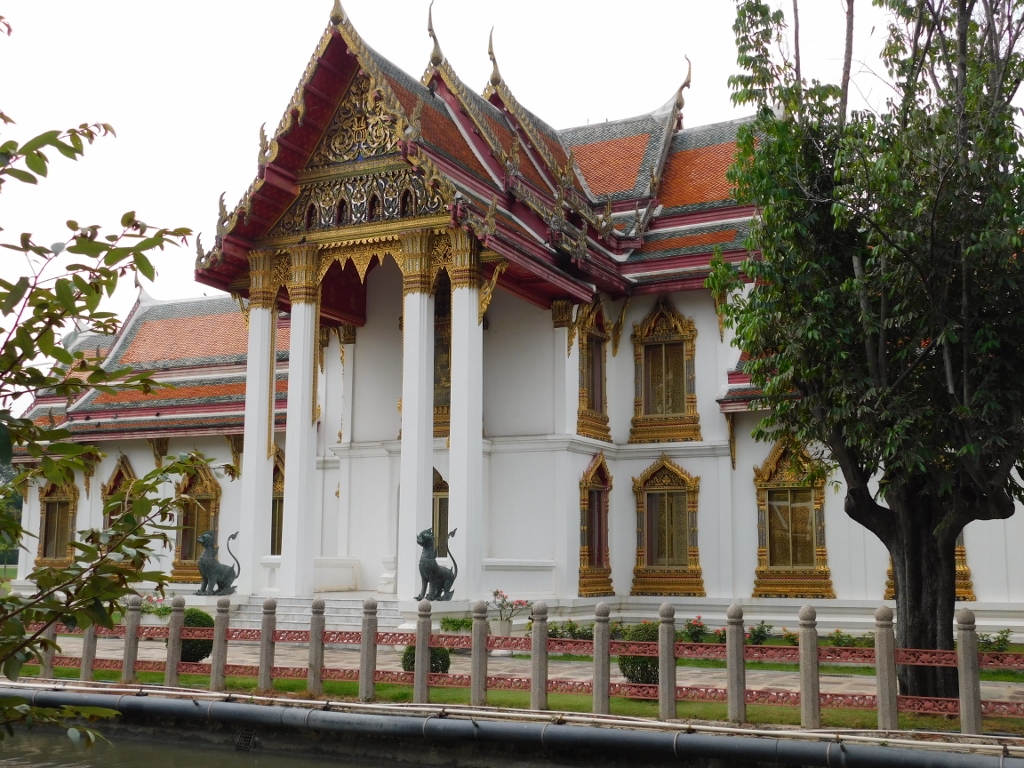 Wat Benchamabophit, temple and monastery complex, a detail
Wat Benchamabophit, temple and monastery complex, a detail
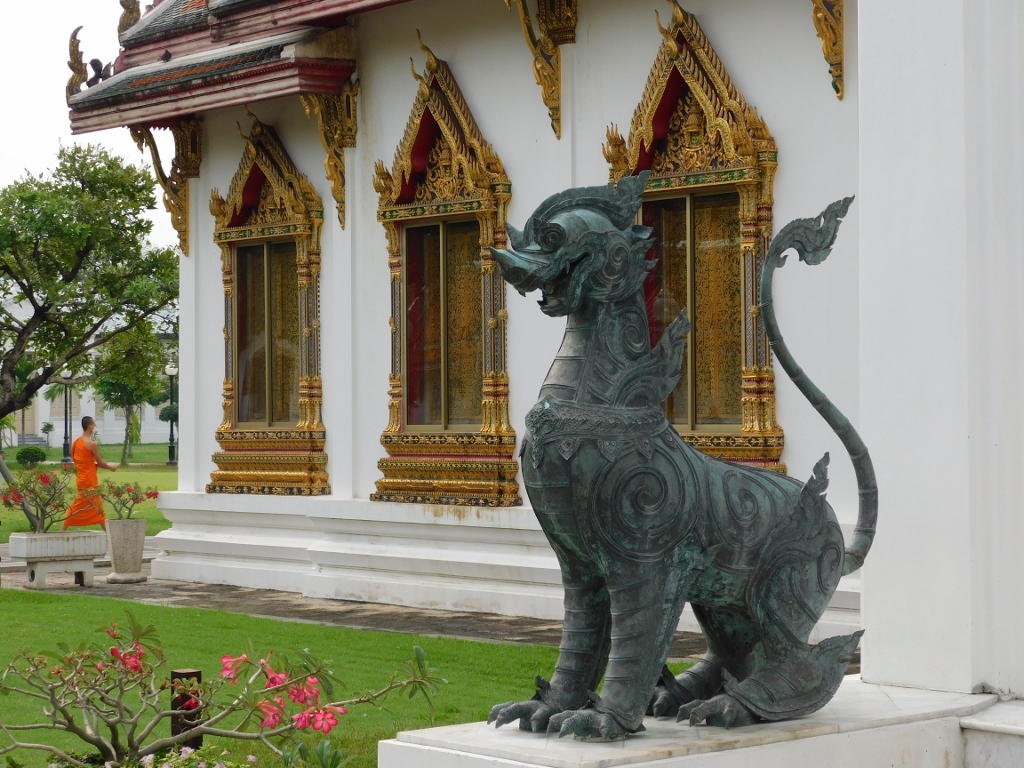 Wat Benchamabophit, temple and monastery complex, a detail
Wat Benchamabophit, temple and monastery complex, a detail
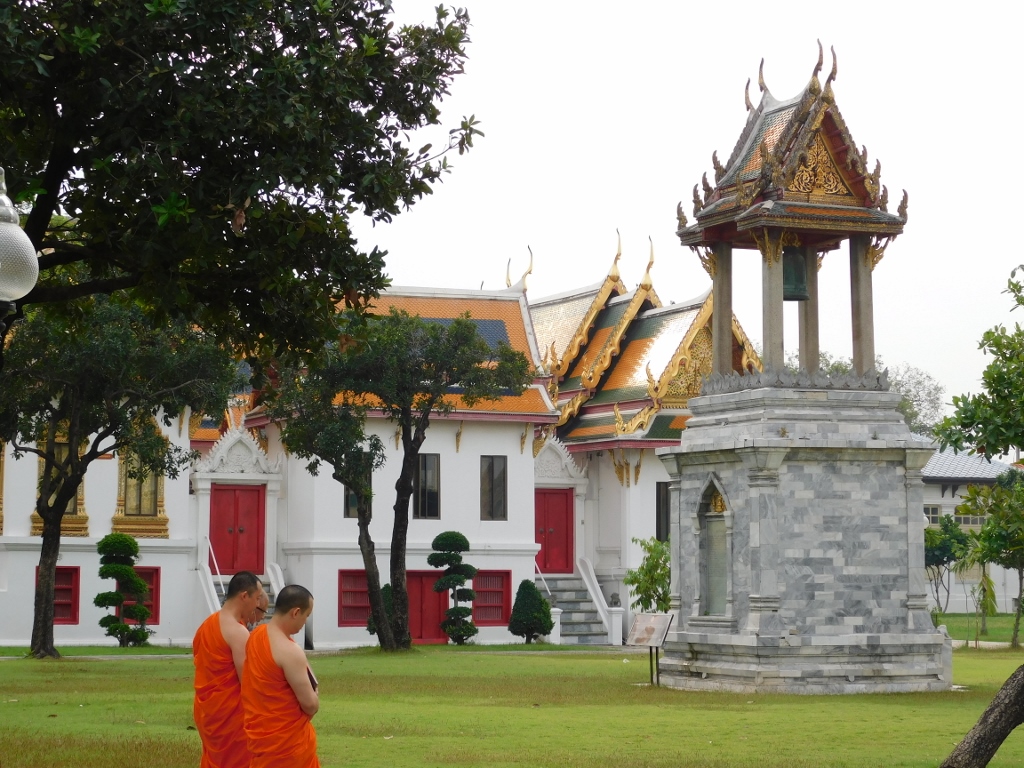 Wat Benchamabophit, temple and monastery complex, a detail
Wat Benchamabophit, temple and monastery complex, a detail
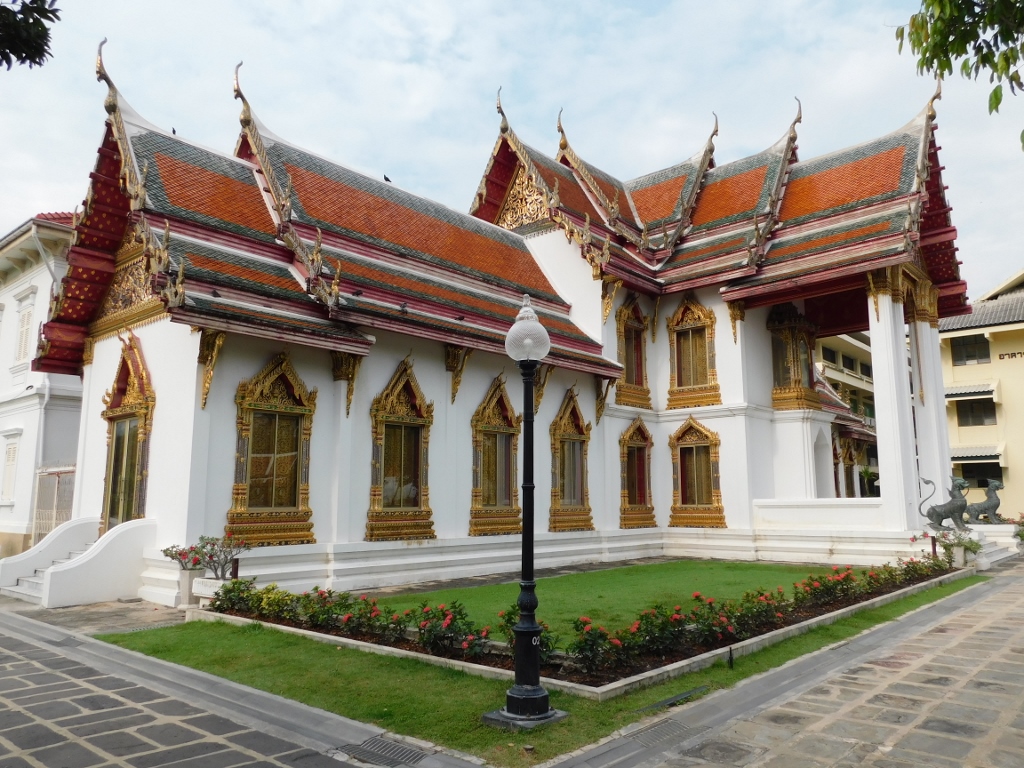 Wat Benchamabophit, temple and monastery complex, a detail
Wat Benchamabophit, temple and monastery complex, a detail
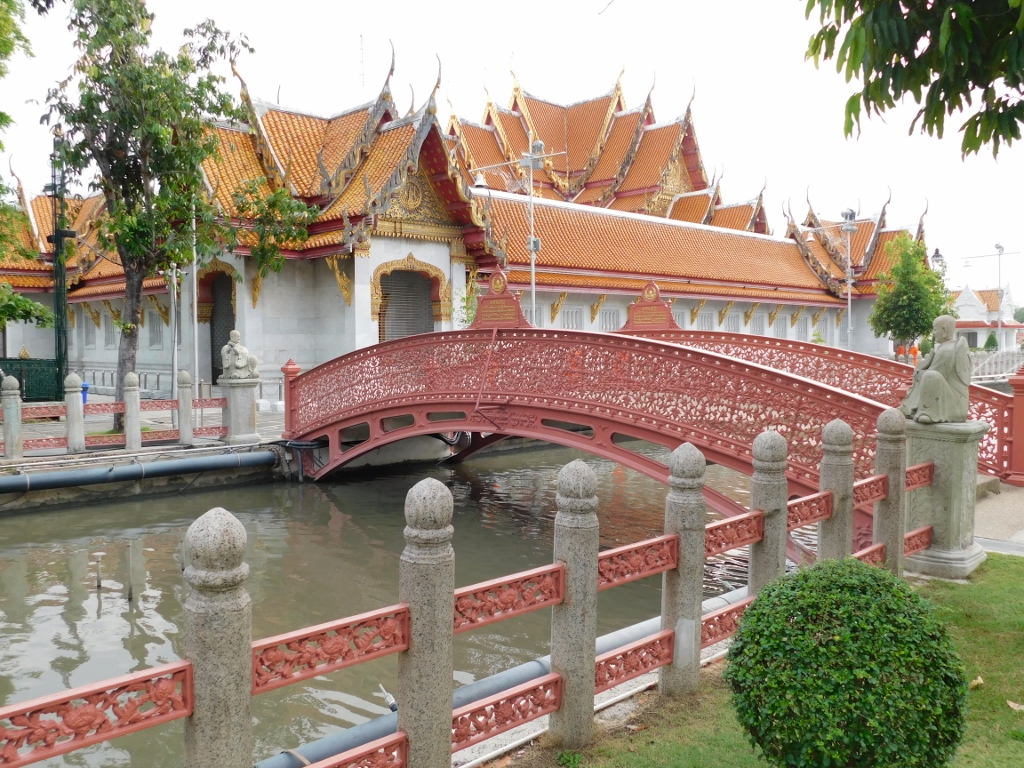 Wat Benchamabophit, temple and monastery complex, a detail
Wat Benchamabophit, temple and monastery complex, a detail
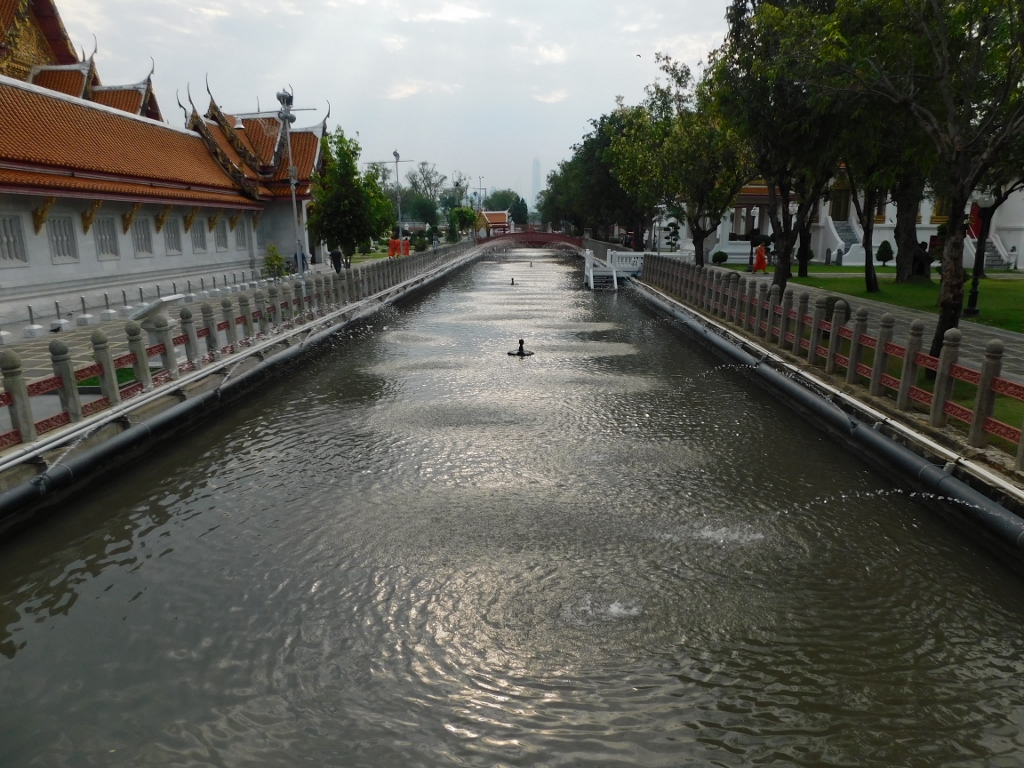 Wat Benchamabophit, temple and monastery complex, a detail
Wat Benchamabophit, temple and monastery complex, a detail
Within the complex, among other things, you can also see Phra Thinang Song Phanuat, a structure that served as the residence of King Chulalongkorn or Rama V and was originally a part of the Grand Palace. Later, the king ordered the relocation of the building here to Wat Benchamabophit to serve as the residence of the temple’s abbot.
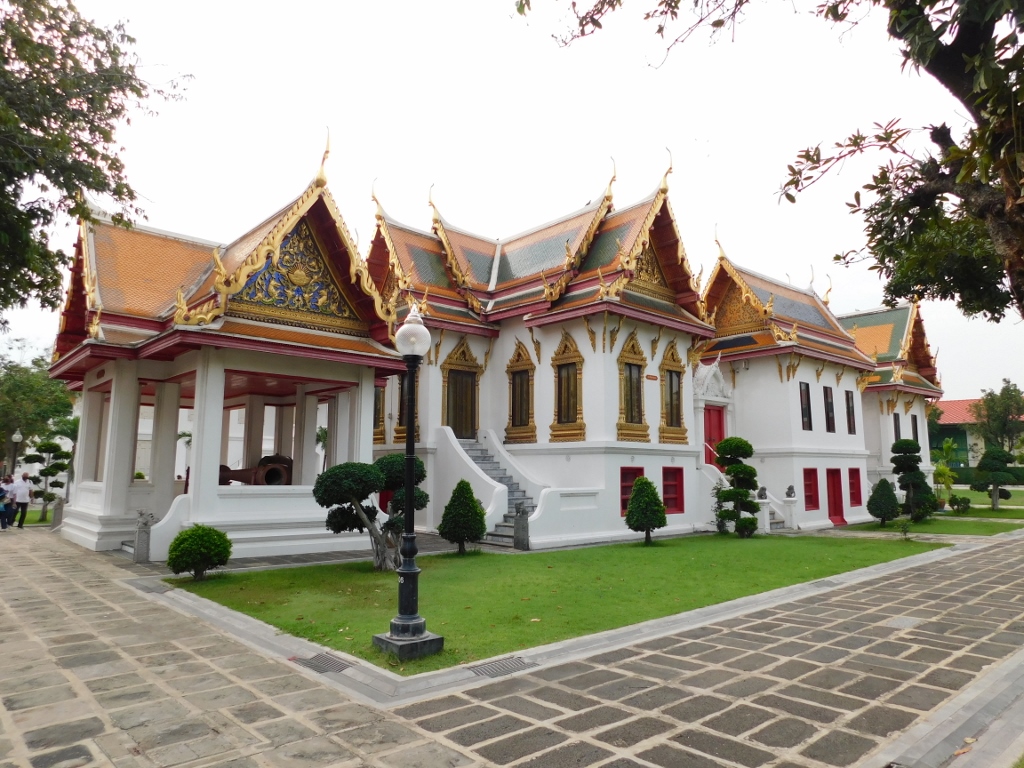 Phra Thinang Song Phanuat
Phra Thinang Song Phanuat
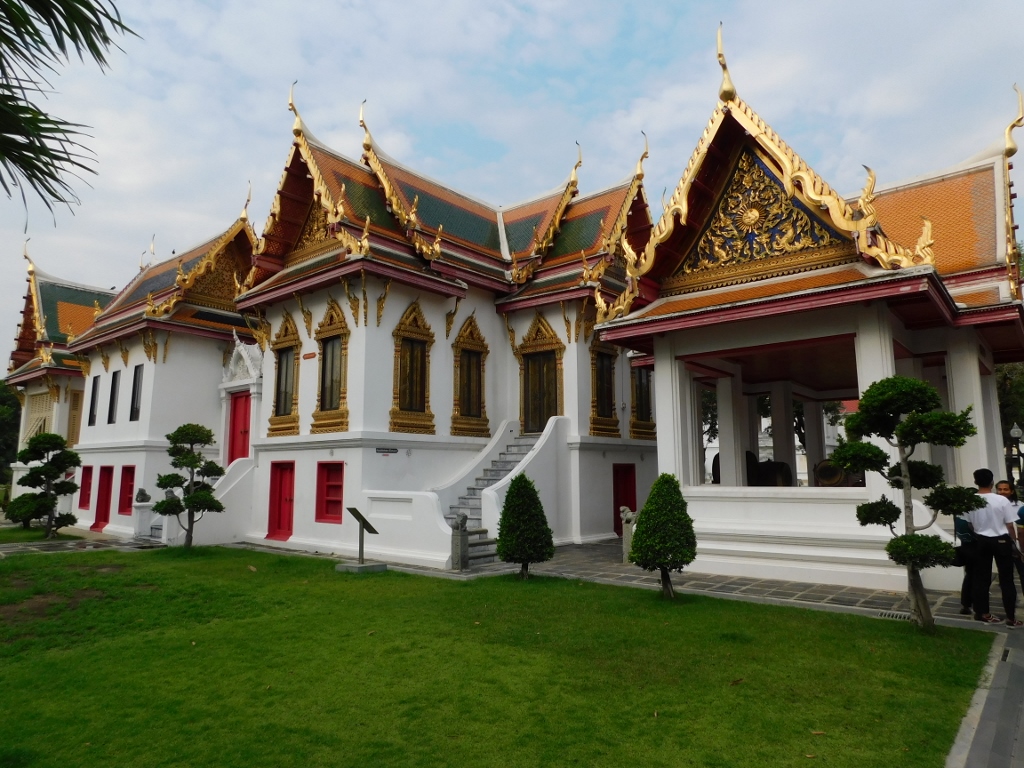 Phra Thinang Song Phanuat
Phra Thinang Song Phanuat
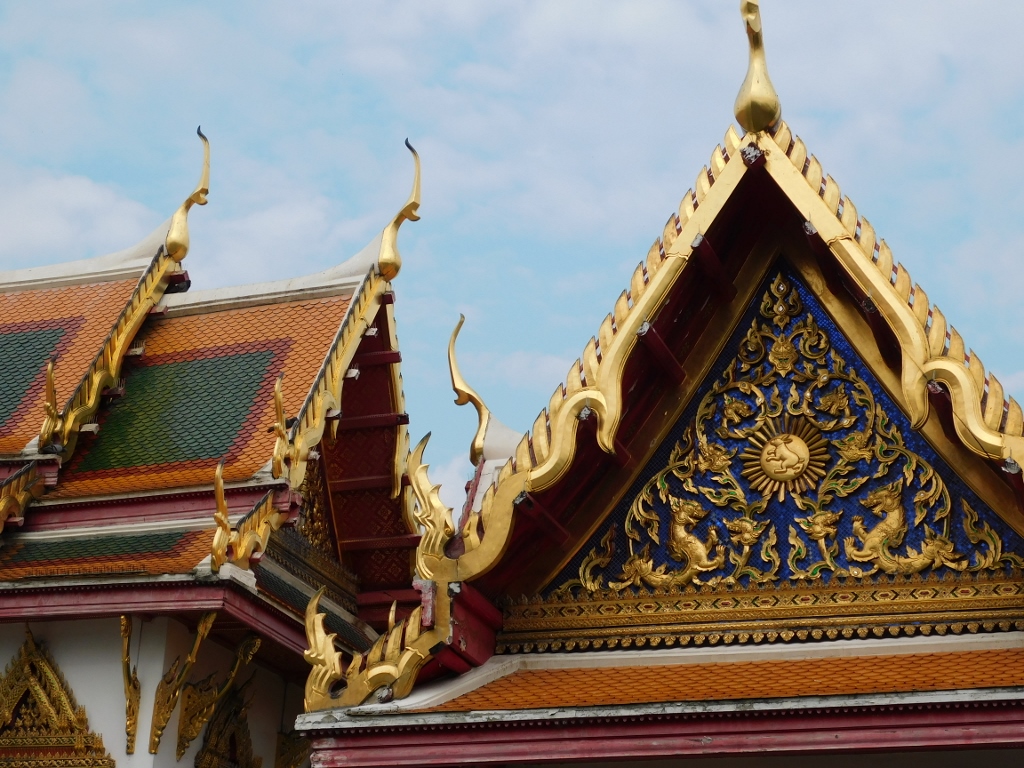 Phra Thinang Song Phanuat, a detail
Phra Thinang Song Phanuat, a detail
As it may be seen in the previous pictures, within this complex, there is also a canal. On the other side of the canal from the structures I initially explored, I saw the main part of the temple, the ubosot or bot, which are the names used for the central building within a Thai Buddhist temple.
 Wat Benchamabophit temple
Wat Benchamabophit temple
I crossed the canal over a small bridge and thus I approached the front facade of the ubosot.
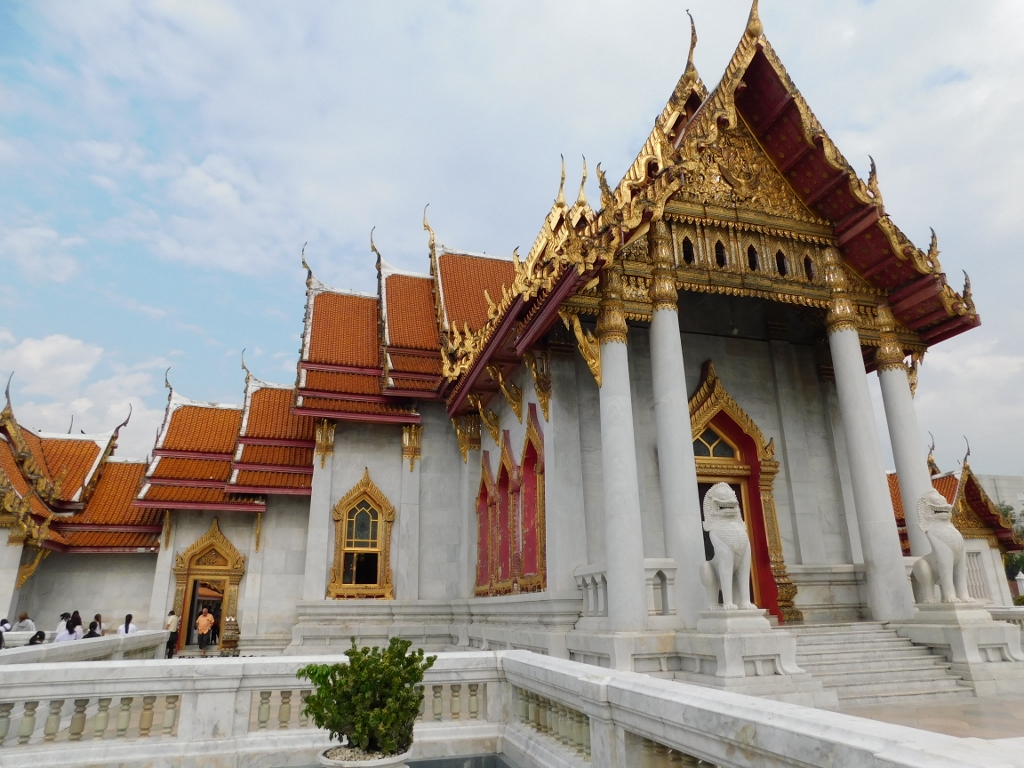 Wat Benchamabophit temple, a detail
Wat Benchamabophit temple, a detail
Wat Ben temple is a first-class royal temple, also known as the Marble Temple because its ubosot was constructed using marble imported from Italy. The construction of the temple began at the end of the 19th century during the reign of Rama V, based on the design of the king’s half-brother who was an architect. The king commissioned the construction of this temple after dealing with the construction of his nearby palace.
The wealth of details visible in this temple, as in the majority of Thai temples, is truly incredible.
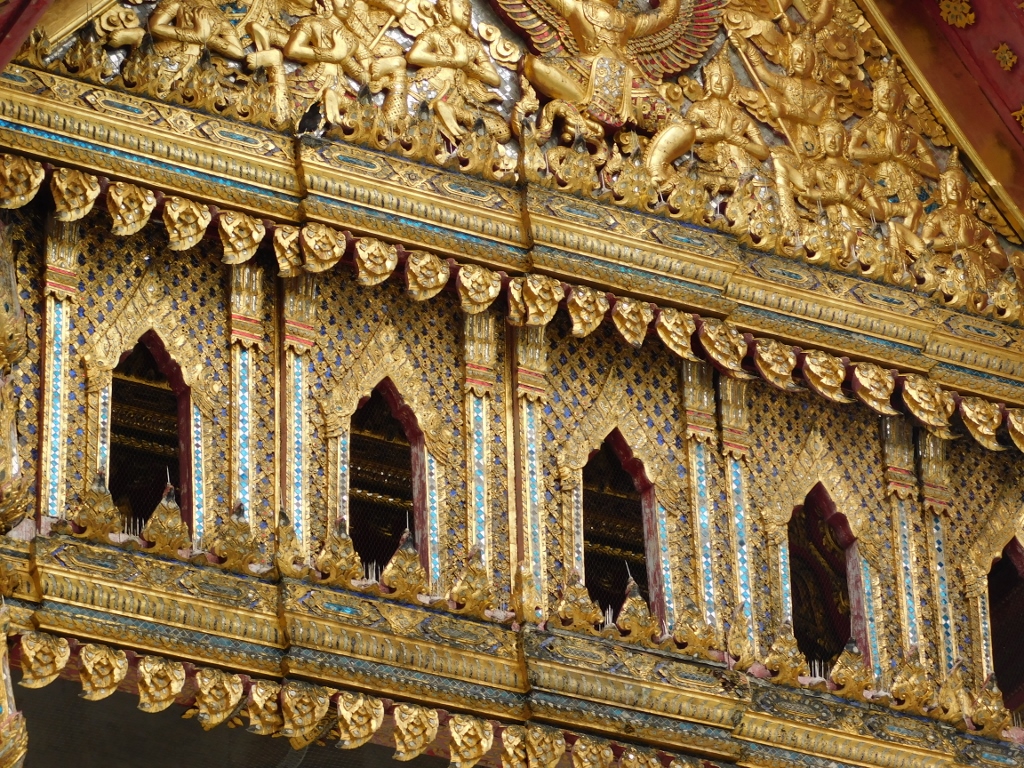 Wat Benchamabophit temple, a detail
Wat Benchamabophit temple, a detail
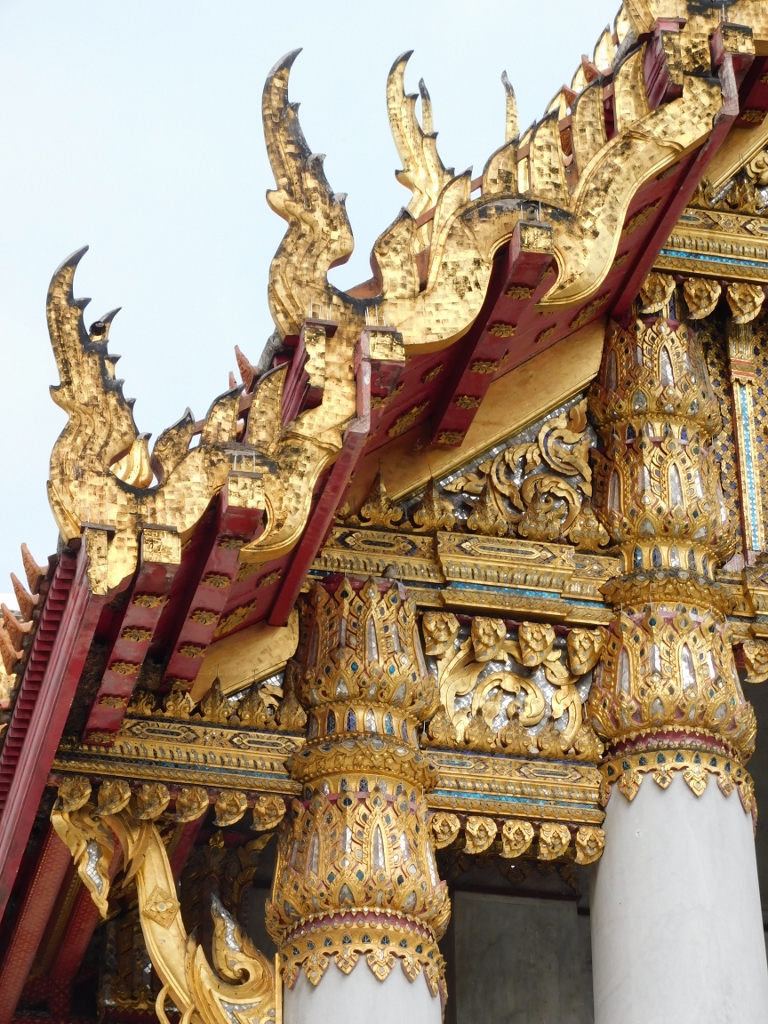 Wat Benchamabophit temple, a detail
Wat Benchamabophit temple, a detail
After capturing details on the facade of the ubosot, I proceeded towards the rectangular inner courtyard and the surrounding cloister, from where one enters the ubosot itself. As I’ve mentioned earlier, in Thailand, it’s customary to remove shoes before entering a temple and this often applies not only to the ubosot, but also to the inner courtyard.
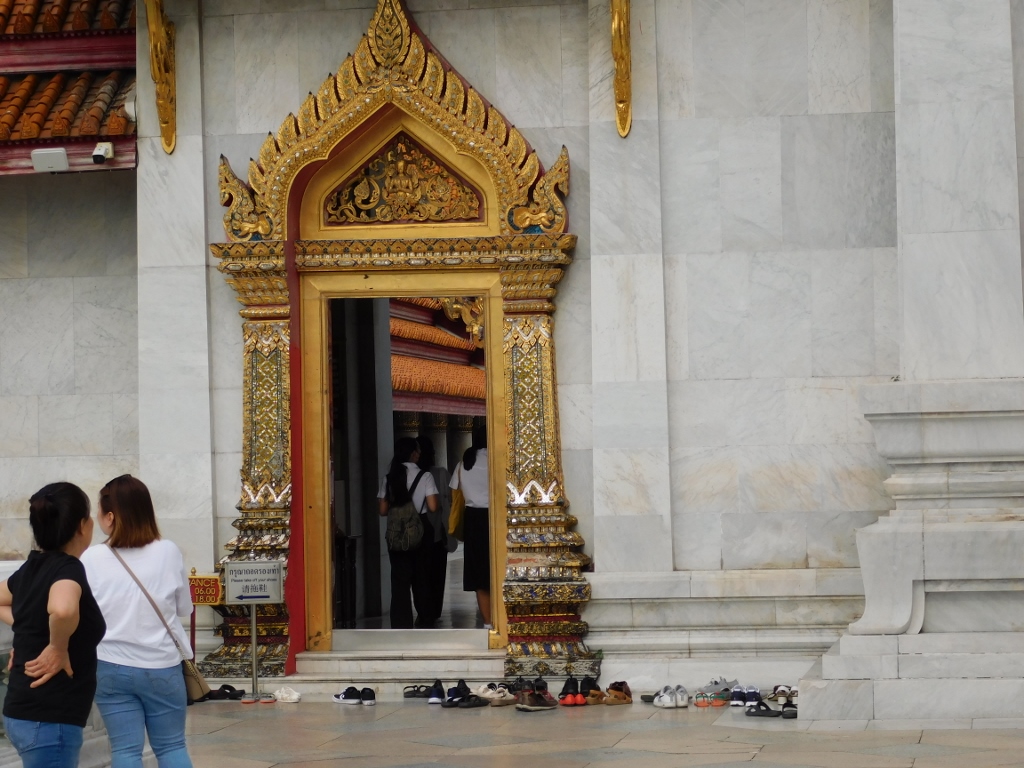 Wat Benchamabophit temple, a detail
Wat Benchamabophit temple, a detail
So, around the inner courtyard there is a cloister or gallery, which is also an almost ubiquitous feature found in Buddhist temples in Thailand.
 Wat Benchamabophit temple, a detail
Wat Benchamabophit temple, a detail
You can see 52 Buddha statues and each of them depicts the Buddha in a different posture or forming various mudras. Mudra is a term originating from Sanskrit and is used to denote a special position of fingers and hands used in various religions. The purpose of making these gestures is to aid in establishing perfect inner balance.
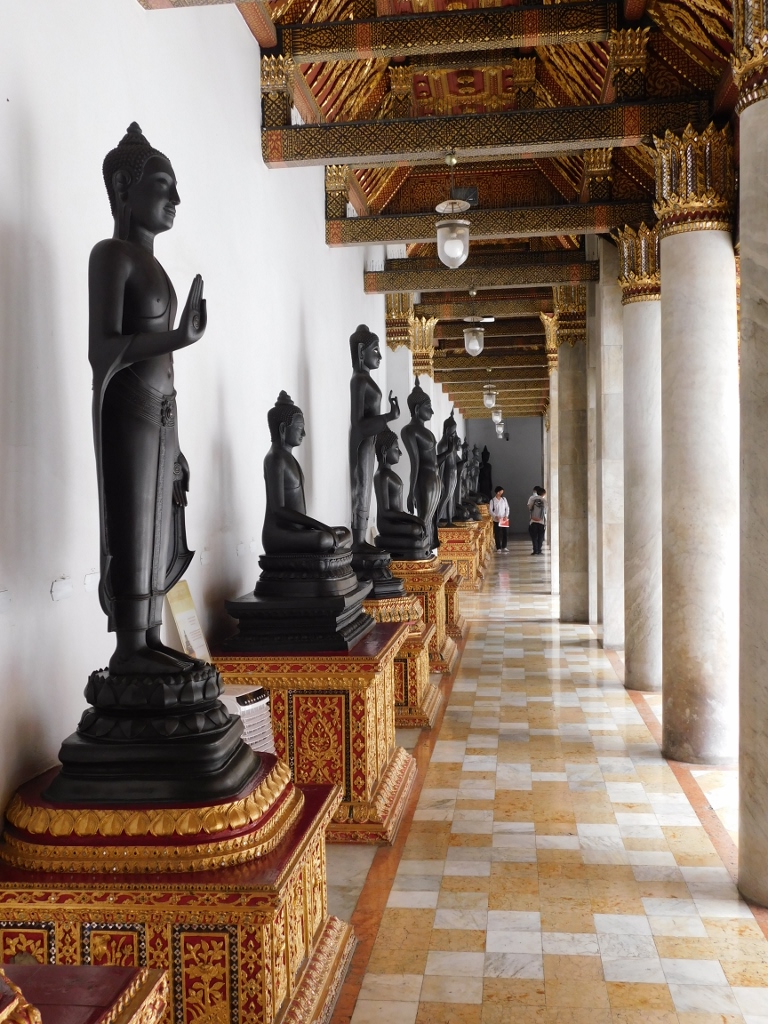 Buddhas in the gallery of Wat Benchamabophit
Buddhas in the gallery of Wat Benchamabophit
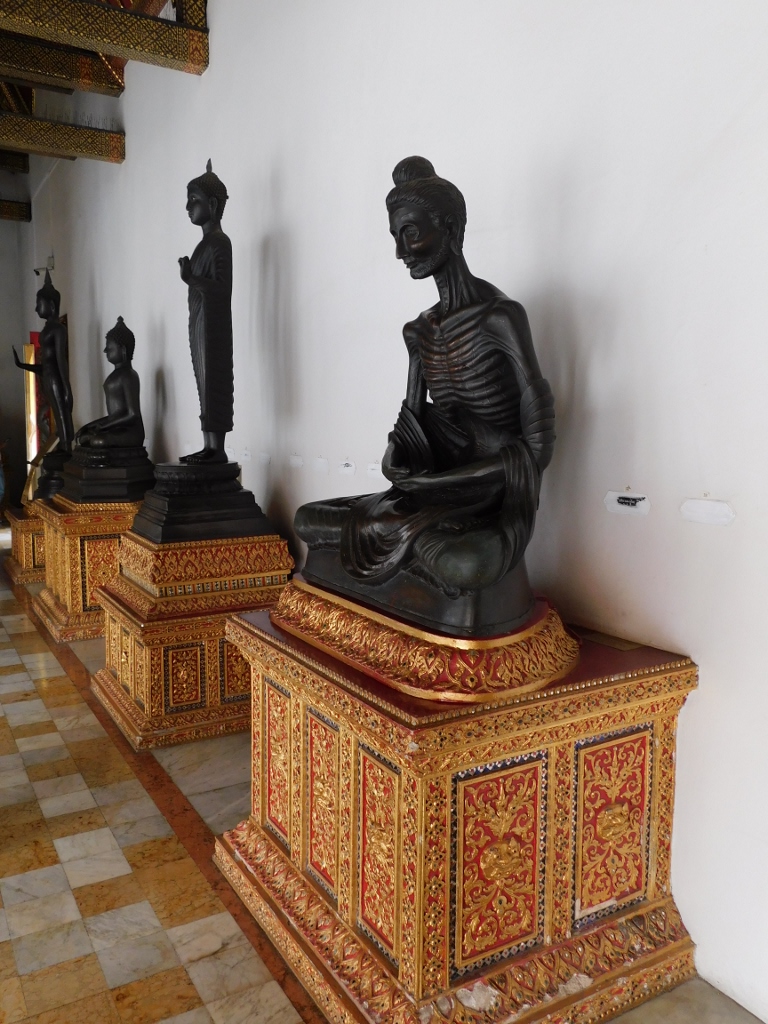 Buddhas in the gallery of Wat Benchamabophit
Buddhas in the gallery of Wat Benchamabophit
However, at this cloister or gallery, attention should also be paid to the well-executed roof with interesting tiles.
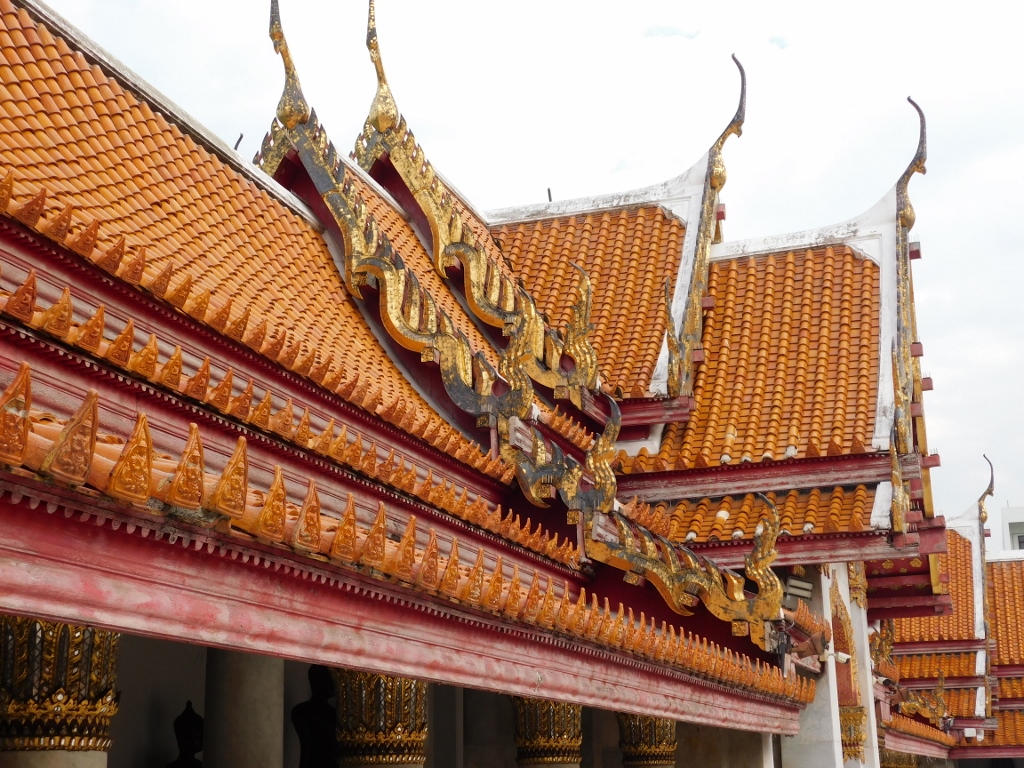 Wat Benchamabophit temple, a detail
Wat Benchamabophit temple, a detail
I first walked around the gallery and the courtyard, allowing me to admire the temple from different angles.
 Wat Benchamabophit temple, a detail
Wat Benchamabophit temple, a detail
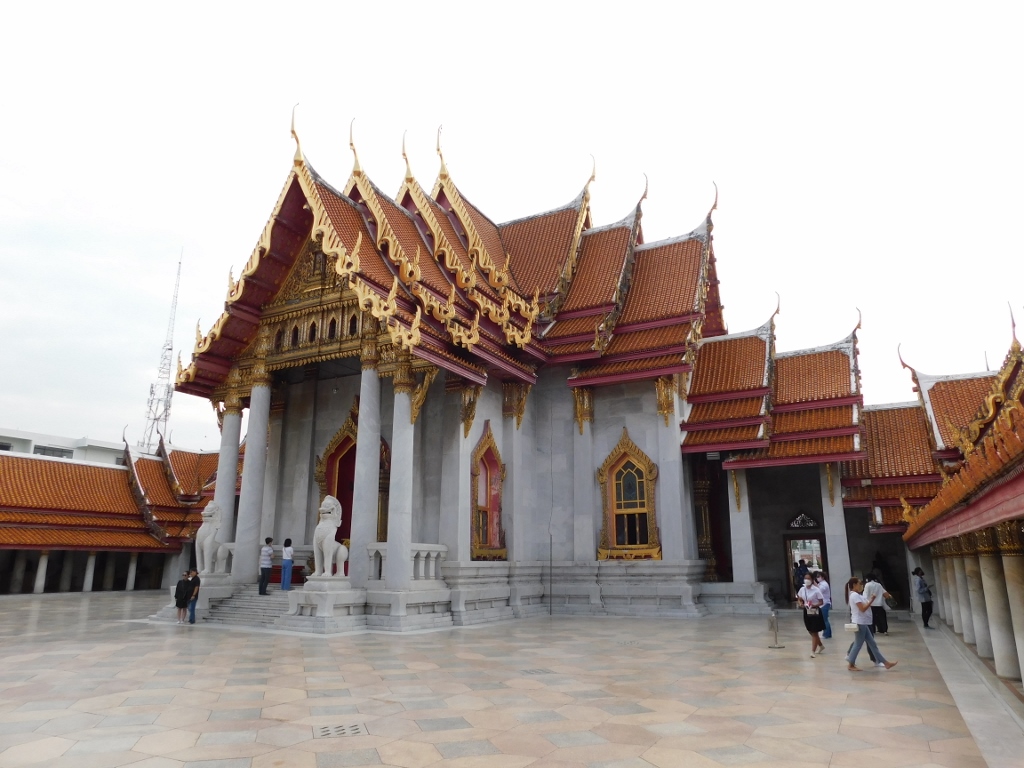 Wat Benchamabophit temple, a detail
Wat Benchamabophit temple, a detail
As for the ubosot, it is guarded at both the back and front by two marble singhas, mythical Thai lion-like creatures symbolising power, strength, courage, dignity, endurance, etc.
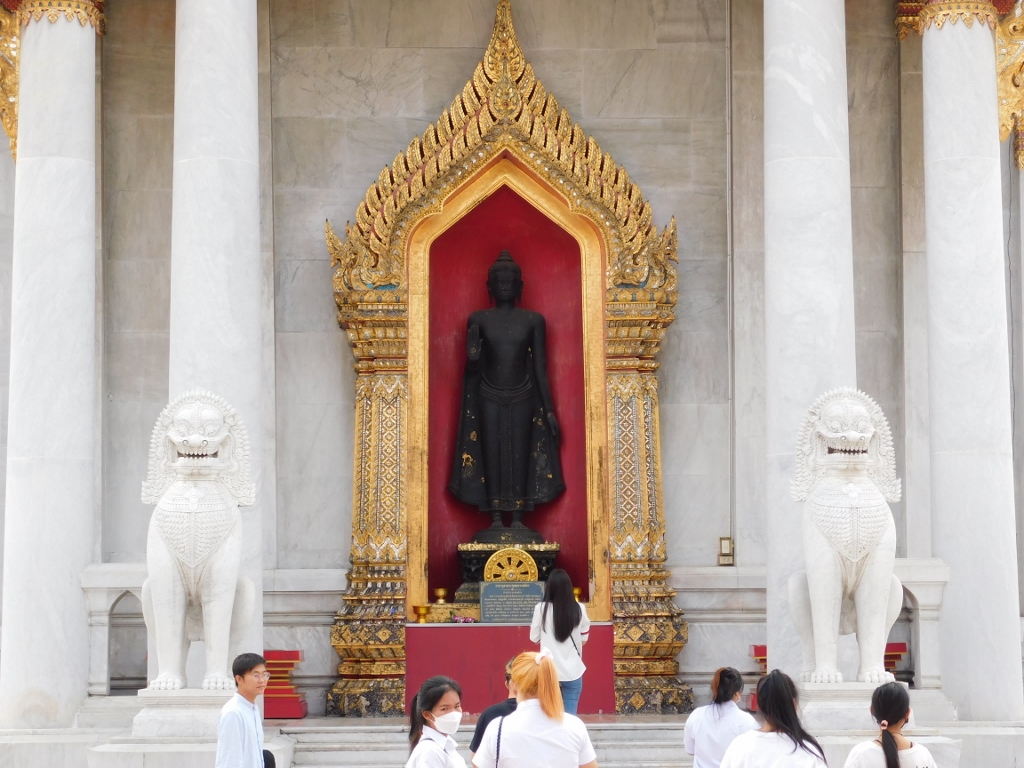 Wat Benchamabophit temple, a detail
Wat Benchamabophit temple, a detail
Although the formal entrance is at the front, it was closed when I approached the temple earlier and I assume it is only used for special occasions. As for the everyday use of the temple, including visits by tourists, there is a side entrance.
The interior of the temple is very harmonious and besides the central figure of the Buddha, the beautiful floor is particularly striking.
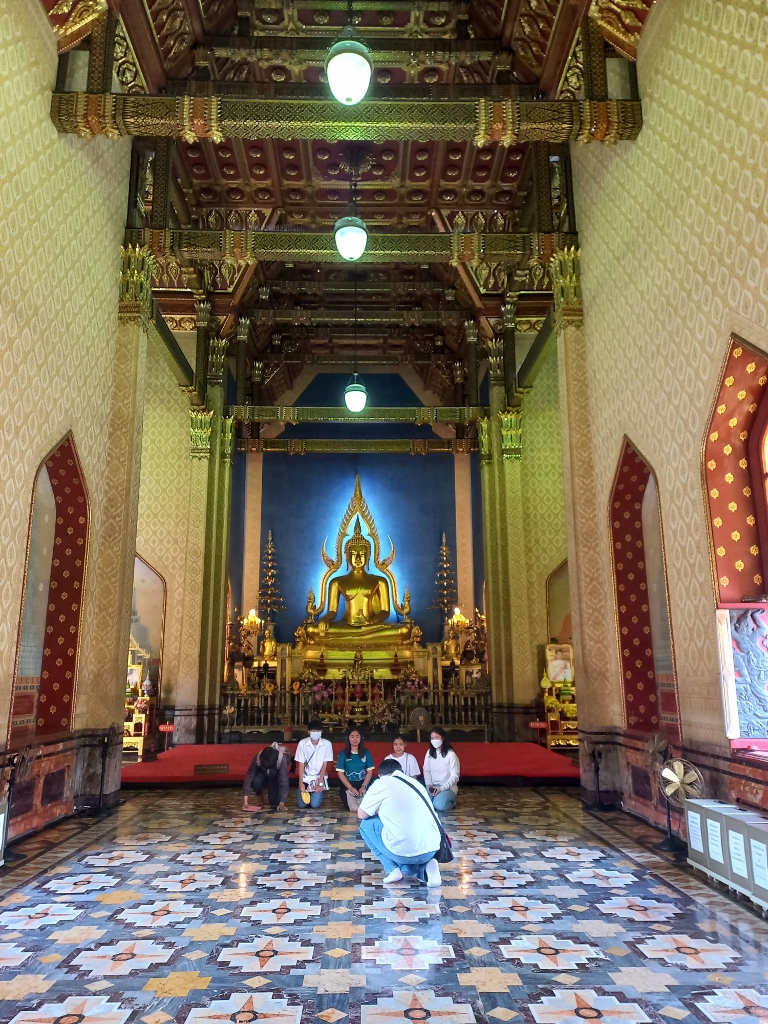 Wat Benchamabophit temple, a detail
Wat Benchamabophit temple, a detail
The Buddha statue is made in the Sukhothai style and was cast in 1920, modelled after a famous statue from northern Thailand. Moreover, it is important to mention that the ashes of King Rama V are enshrined at the base upon which the central figure of the Buddha is placed.
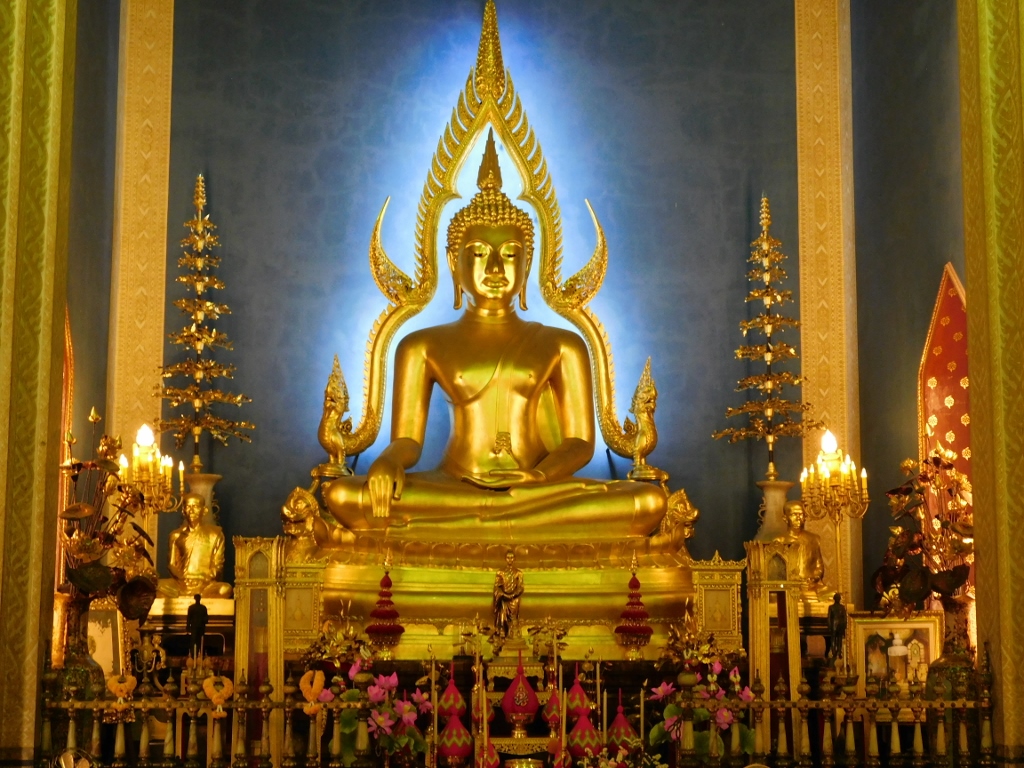 Wat Benchamabophit temple, a detail
Wat Benchamabophit temple, a detail
Inside the temple, numerous other picturesque details can be observed. However, setting aside the importance of the temple as a religious site, I was most impressed by the appearance of the temple when viewed from the front.
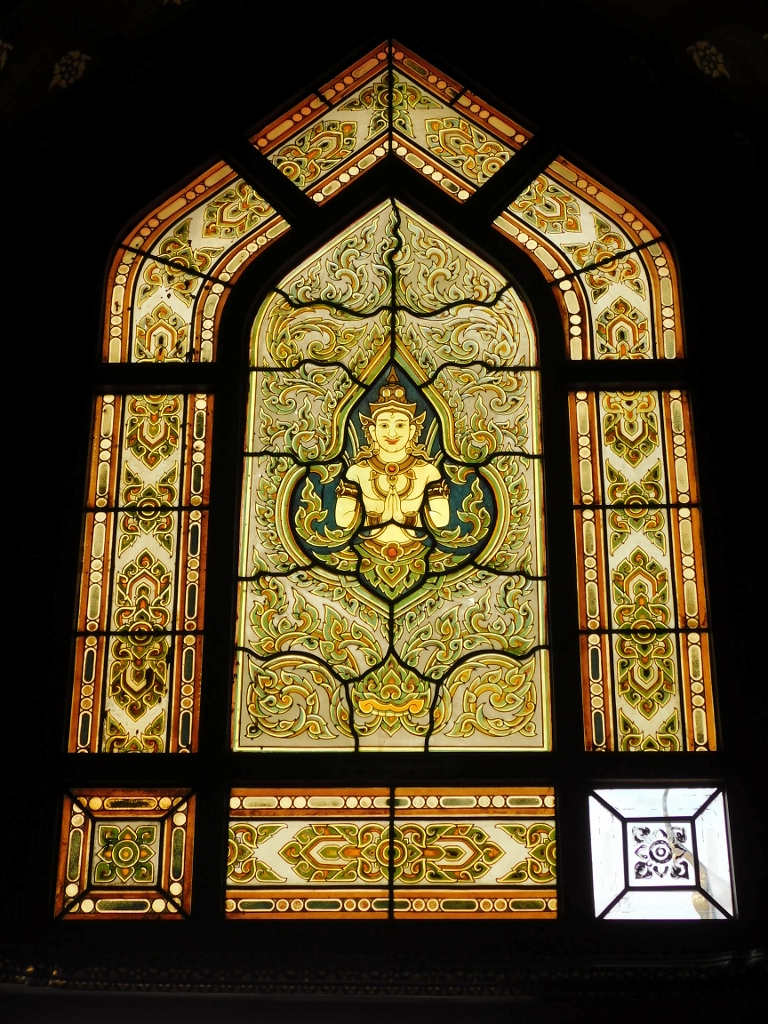 Wat Benchamabophit temple, a detail
Wat Benchamabophit temple, a detail
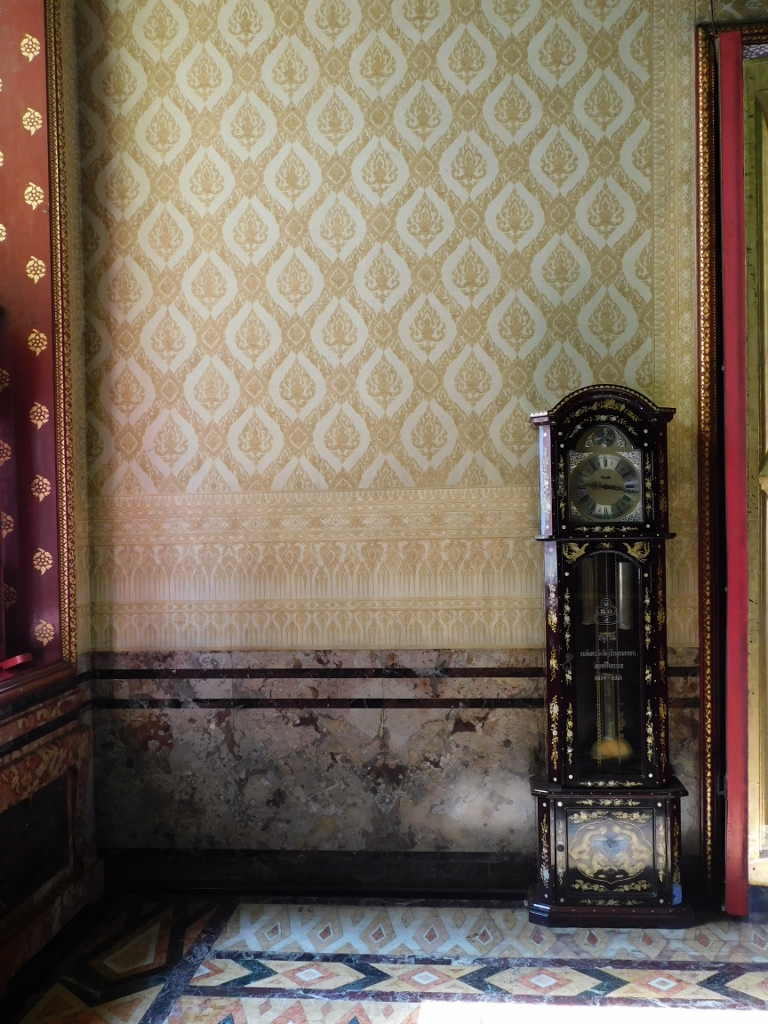 Wat Benchamabophit temple, a detail
Wat Benchamabophit temple, a detail
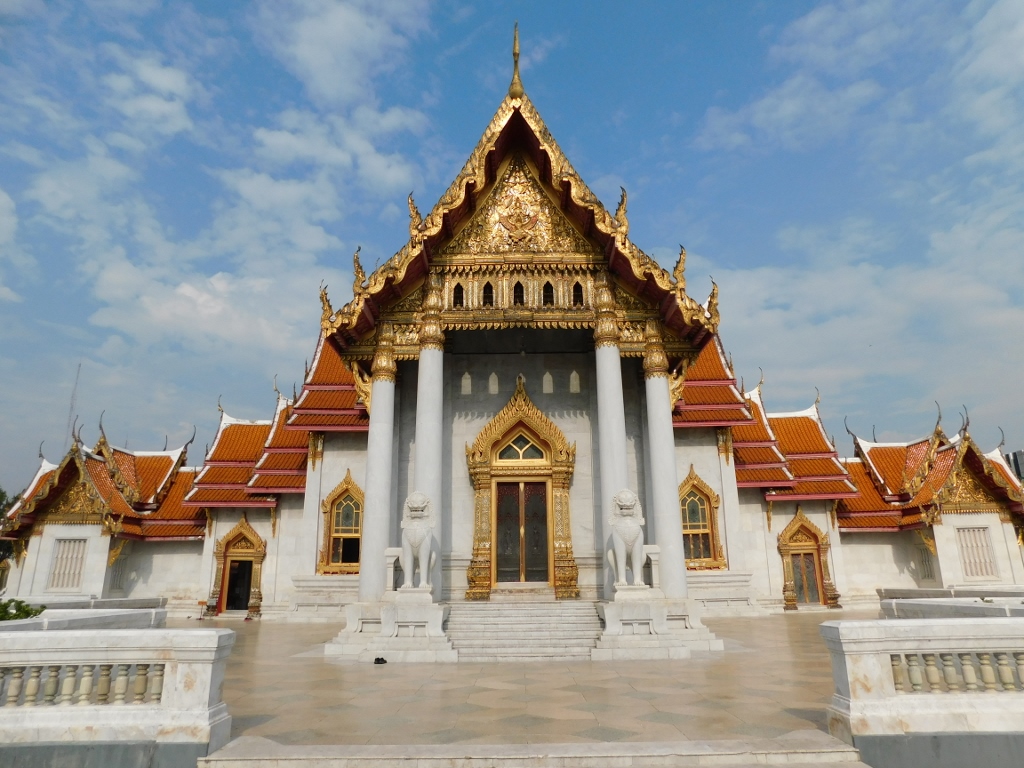 Wat Benchamabophit
Wat Benchamabophit
 Wat Benchamabophit
Wat Benchamabophit
After visiting the temple, I embarked on a rather aimless stroll through this part of Bangkok. In fact, it wasn’t entirely purposeless. I’ve mentioned before that one of my old guidebooks about Thailand mentioned interesting sites in this area, including a zoo that didn’t interest me at all. Nevertheless, I set out to explore, hoping to find something captivating. On one side of the street, I noticed significant construction work underway, making it clear that this area wasn’t open to visitors during my stay. On the other side of the street, however, there was a large block that encompassed the royal residence. It was evident why casual tourists didn’t have unrestricted access, although I later read that visitors could tour the residence with advance permission. The entire block was surrounded by a moat and on this occasion I walked alongside the canal.
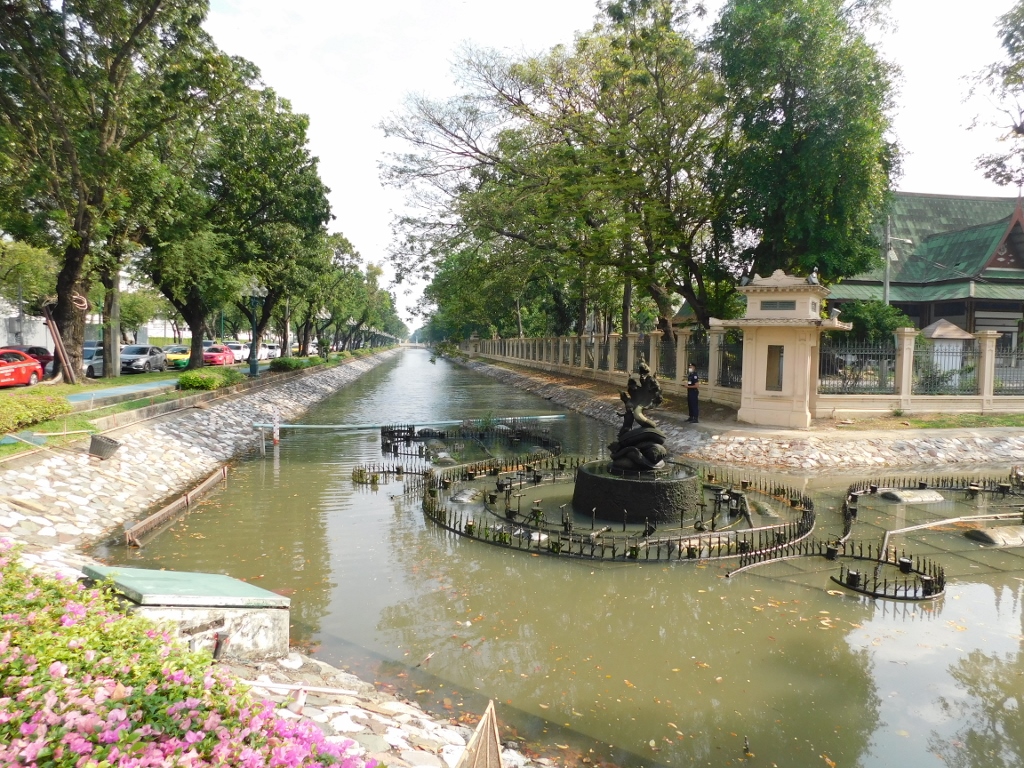 Moat around the block with the royal residence
Moat around the block with the royal residence
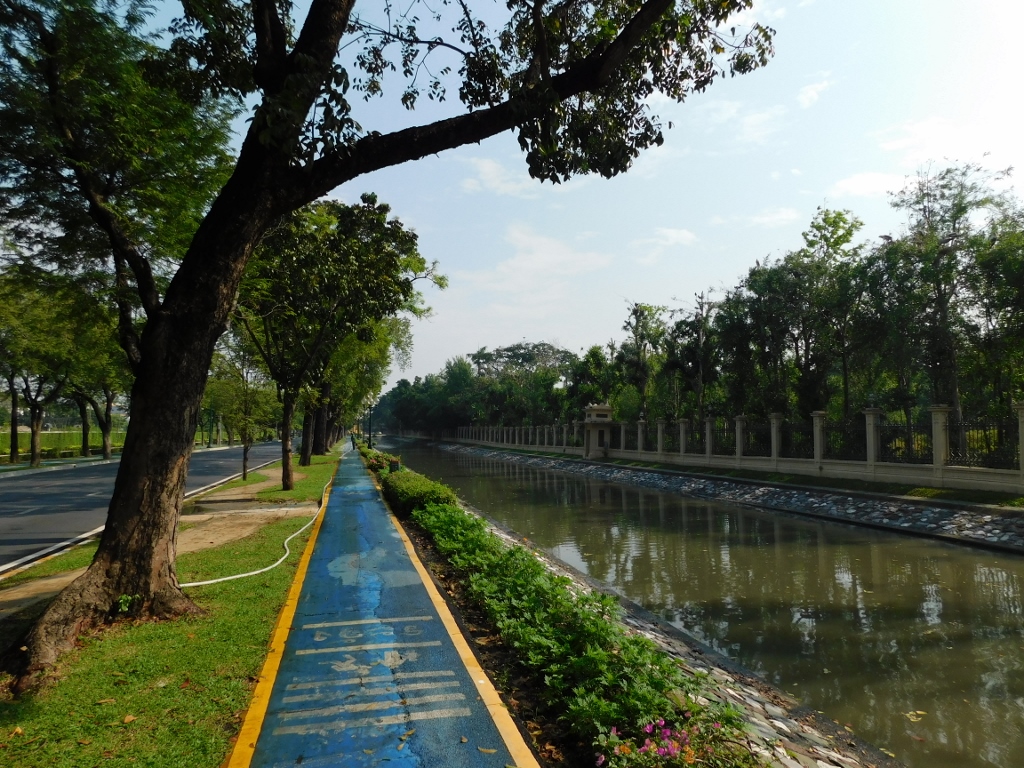 Moat around the block with the royal residence
Moat around the block with the royal residence
However, I had no regrets about coming here. Right next to the busy street with numerous vehicles, something specific and exceptionally interesting to me is visible outdoors. I’m talking about birds and an incredibly vast number of nests. I couldn’t help but wonder how the birds managed to construct so many nests, accommodating both adult and young birds, in the trees favoured among them.
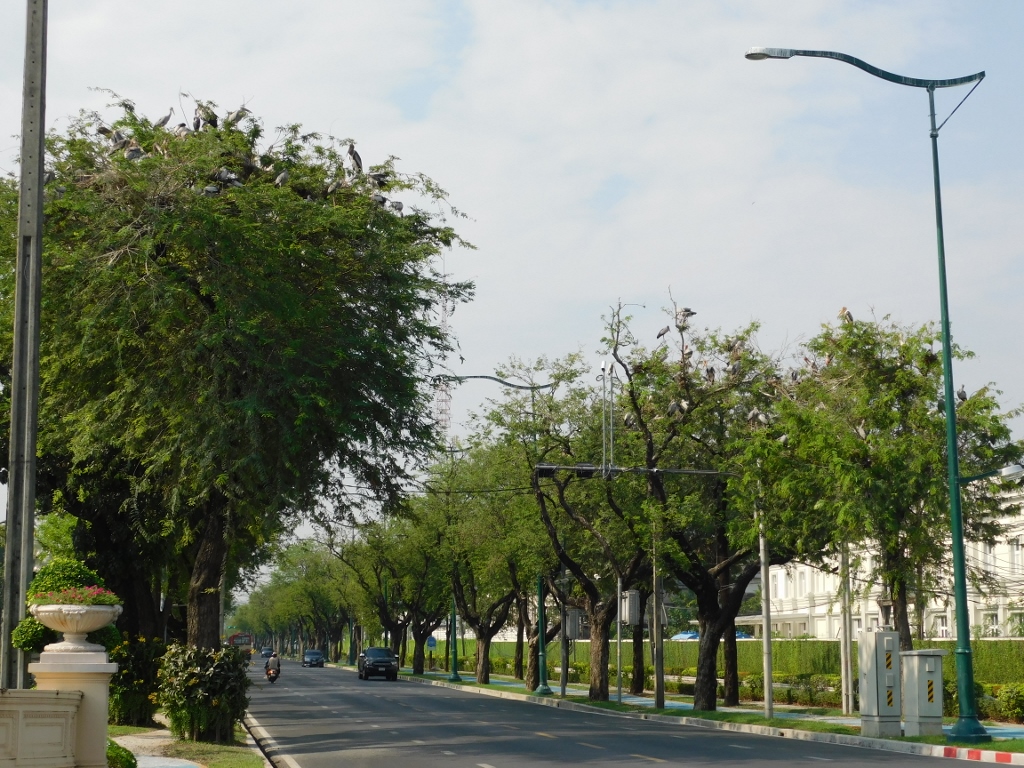 A residential neighbourhood popular among Bangkok birds
A residential neighbourhood popular among Bangkok birds
Here, I managed to spot and take photos of two quite large and impressive species: the Asian openbill stork (Anastomus oscitans) and the painted stork (Mycteria leucocephala). Now it was clear to me which large birds I had occasionally seen soaring over Bangkok.
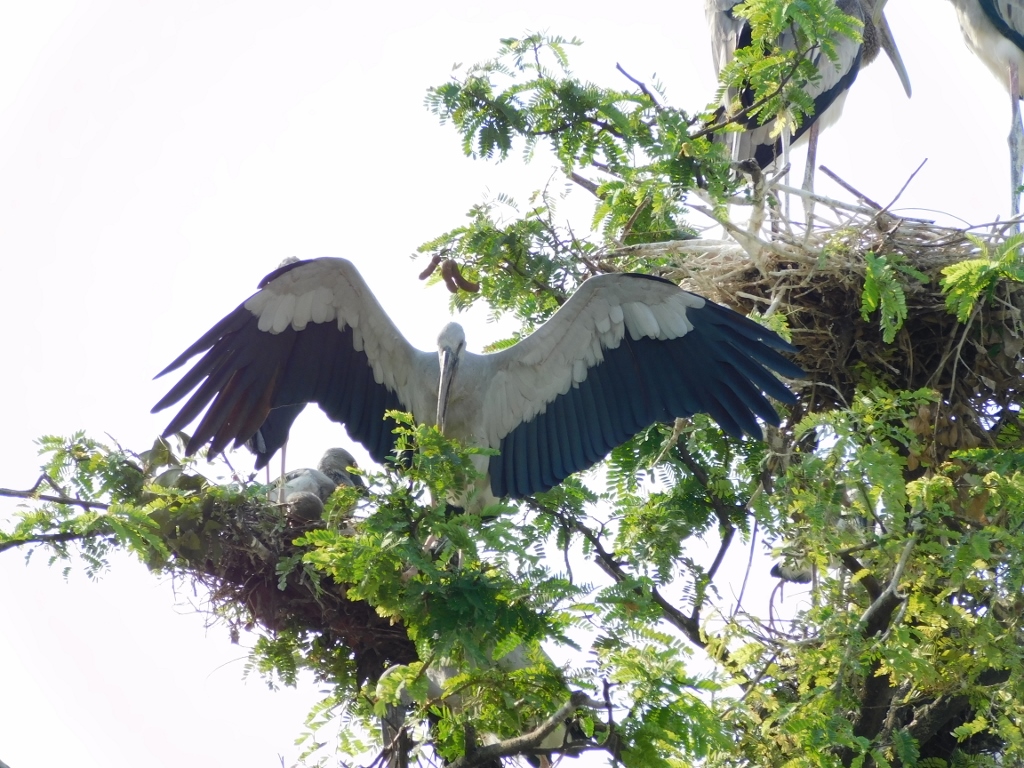 Asian openbill stork
Asian openbill stork
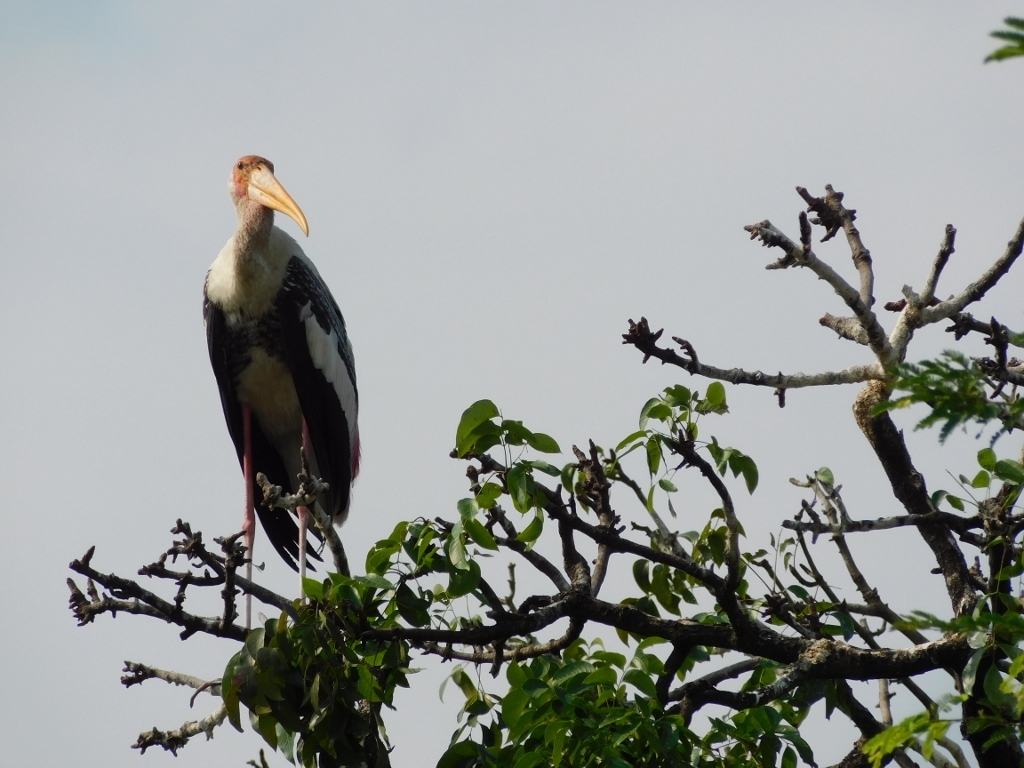 Painted stork
Painted stork
Somewhere around here, I started making my way back to the hotel by taking a large circle first heading west towards the Chao Phraya River and then after a few blocks, I turned south. Along the way, I passed by a school where there were carts with fresh fruit for sale. In a moment’s decision, I chose to buy some papaya which the vendor sliced into pieces and put in a plastic bag along with a wooden stick for easier consumption. I wasn’t quite adept at handling it, so I had my hands full, but the fruity refreshment was certainly enjoyable.
I must admit that I didn’t quite enjoy walking the streets of Bangkok amidst heavy traffic and noise, all under increasing temperatures. However, I was not inclined to take a taxi or any other form of transportation either as my hotel was relatively close and this way I could gradually explore the city. Along the way, I passed by the National Library, but what intrigued me the most was when I walked past the food stalls that one inevitably encounters in Bangkok. Even if they’re not actively cooking at these stalls, it’s possible to buy complete meals expertly packed in plastic bags and, of course, there are desserts as well.
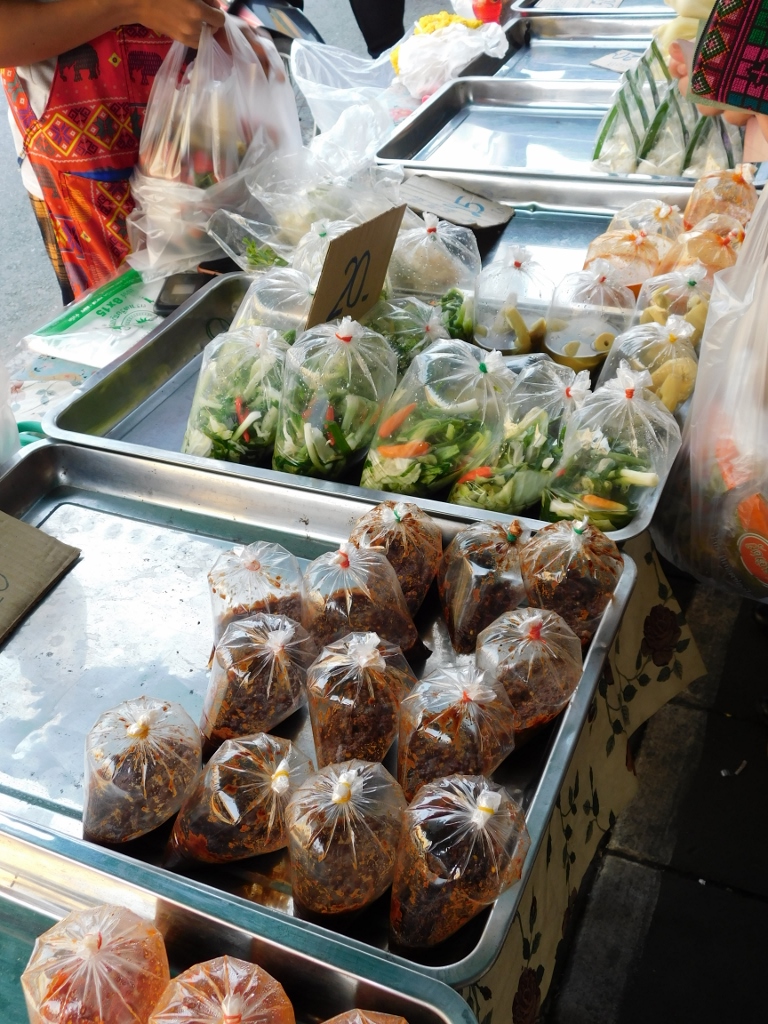 Lunch in a plastic bag
Lunch in a plastic bag
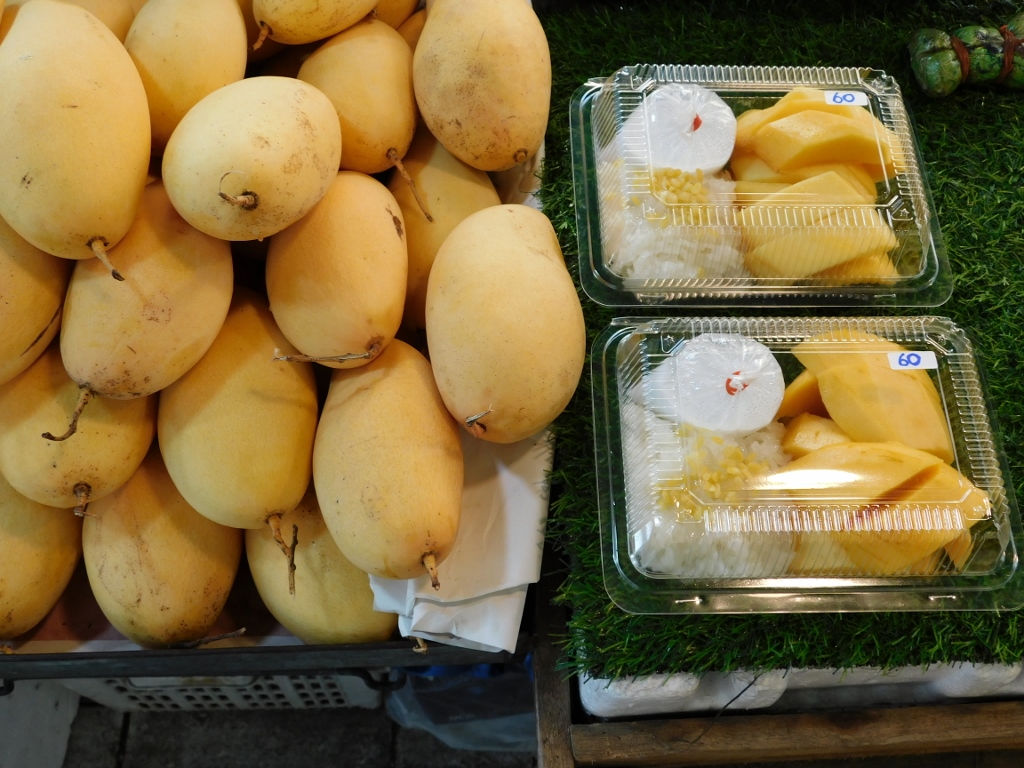 Fresh mango is on the left and packed mango sticky rice is on the right
Fresh mango is on the left and packed mango sticky rice is on the right
There was, of course, plenty of fruit, mostly of the varieties that I found ‘exotic,’ but I also encountered locally grown strawberries (from northern Thailand) for the first time. I must admit they didn’t appeal to me at all. Perhaps they are sweet, but for me strawberries need to be completely red to inspire me. On the other hand, why eat strawberries in Thailand when there are different other fruits naturally growing here that are fantastically delicious.
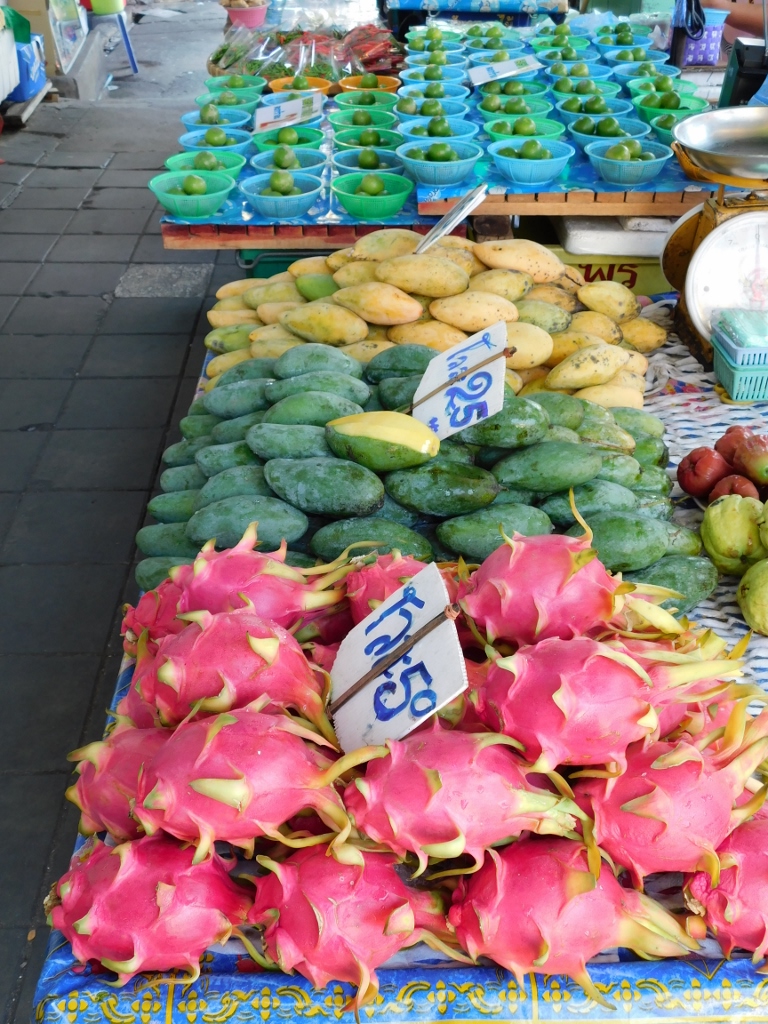 Fruits on the stalls in Bangkok
Fruits on the stalls in Bangkok
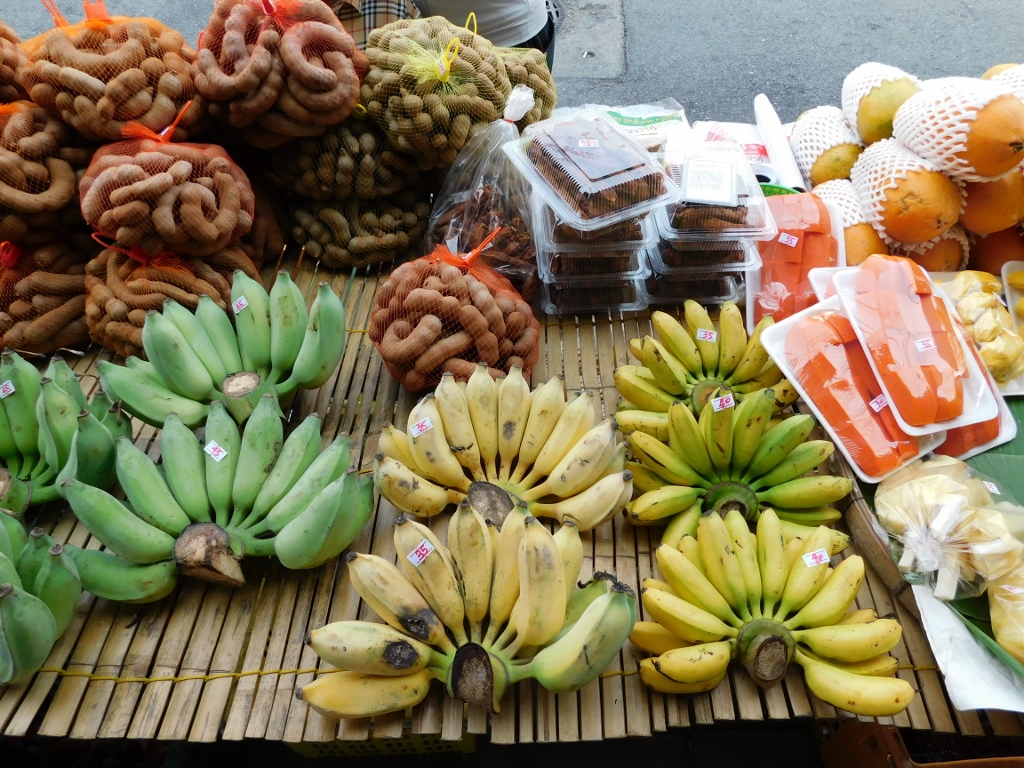 Fruits on the stalls in Bangkok
Fruits on the stalls in Bangkok
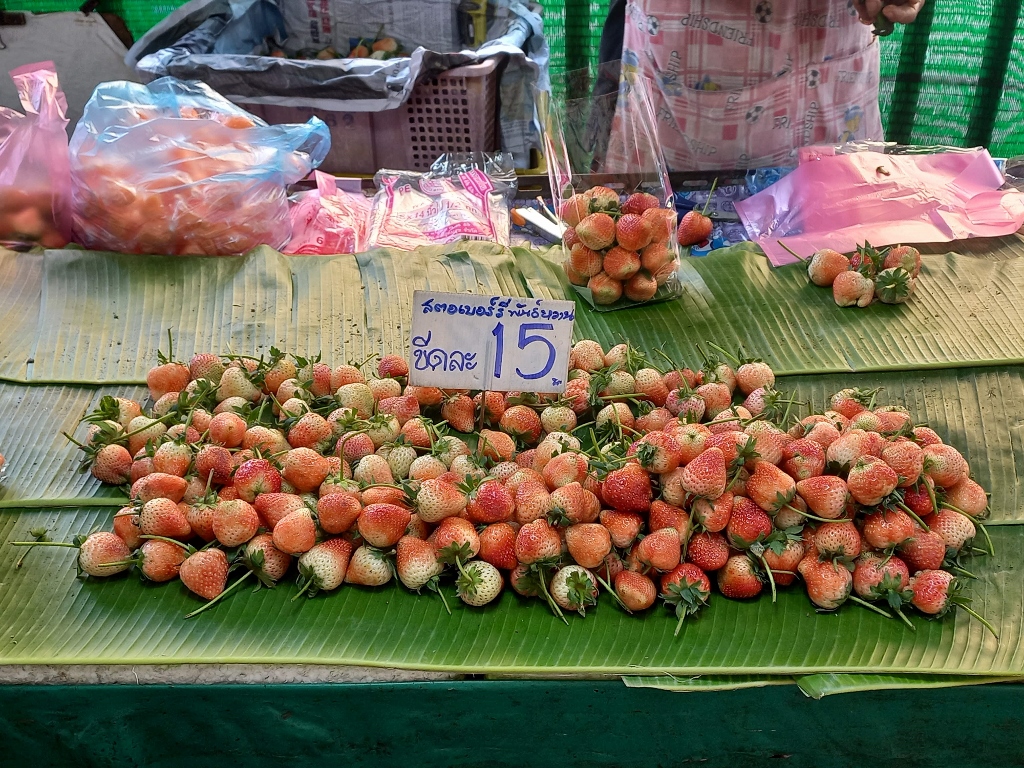 Fruits on the stalls in Bangkok
Fruits on the stalls in Bangkok
But, on the stalls, you could still see meat being prepared on the spot. For example, skilfully arranged grilled chicken pieces.
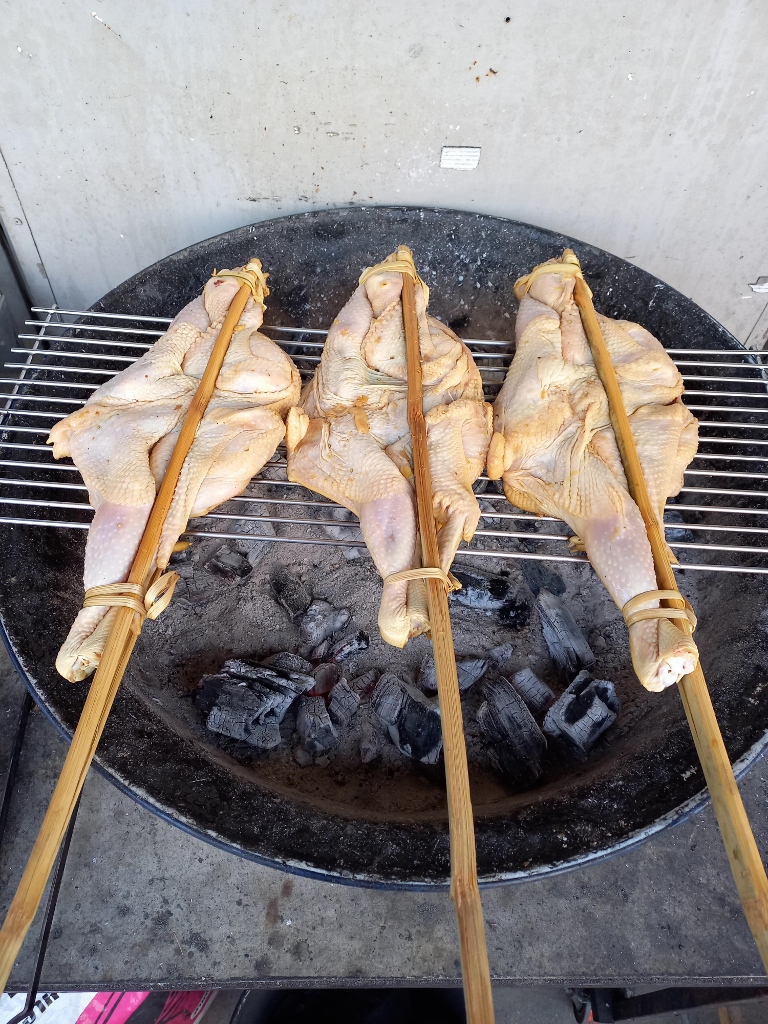 Chicken pieces prepared in a street of Bangkok
Chicken pieces prepared in a street of Bangkok
Besides fruits and various ready-to-eat meals, flower amulets are also sold on the street stalls. Diligent sellers patiently string together fresh flowers, creating these enchanting wreaths, which are not only worn to temples, but are also often bought by drivers who then place them in their vehicles. I also saw altars in front of my hotel and I’m sure many households have such wreaths to bring them good luck as well.
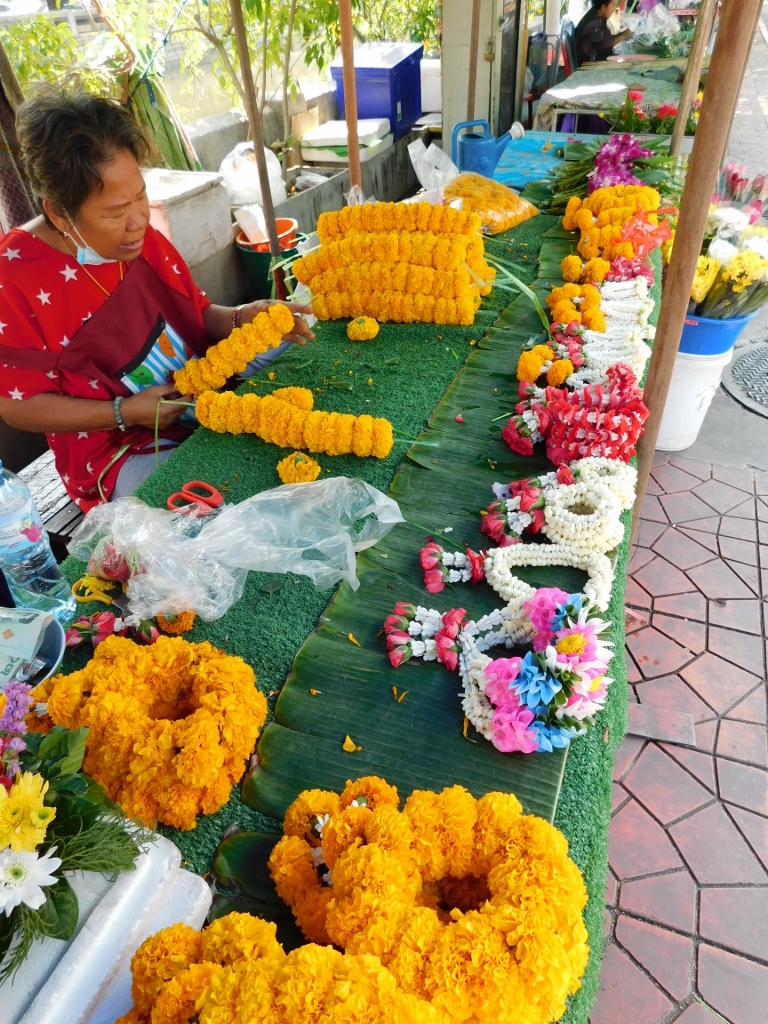 Flower amulets strung in a street of Bangkok
Flower amulets strung in a street of Bangkok
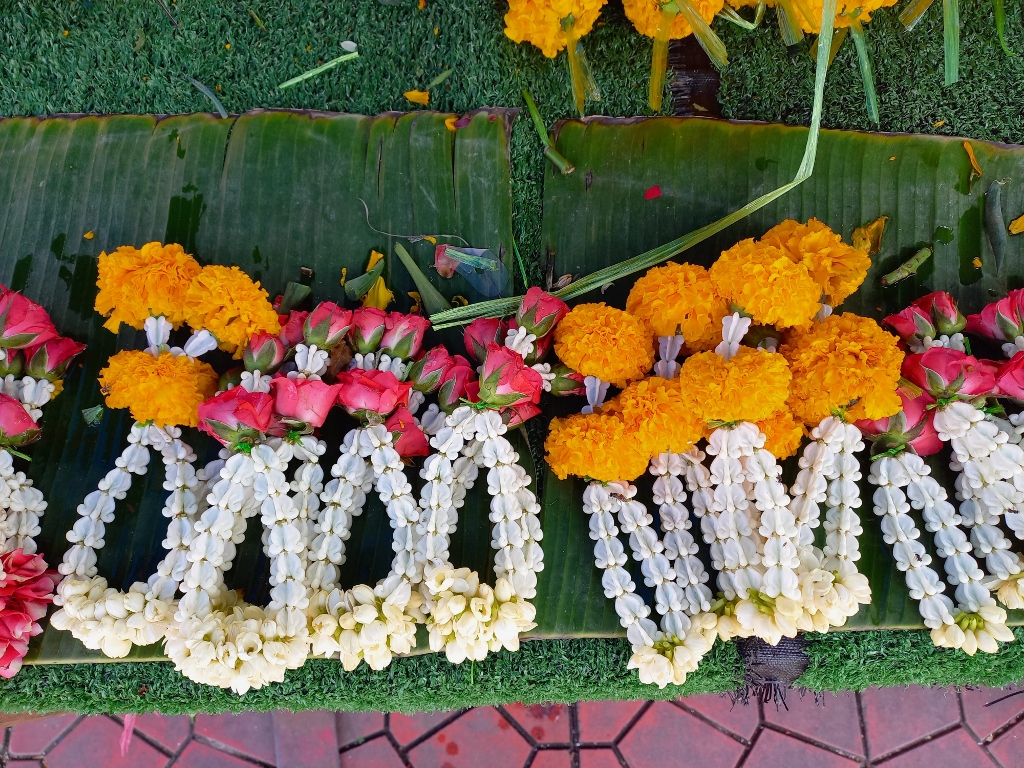 Flower amulets
Flower amulets
I found utility poles and power cables quite interesting. I come from a country where most of these cables are placed underground, so I find these scenes quite amusing. I was thinking about how challenging it must be for the workers of the Thai electricity distribution company to untangle all these cables.
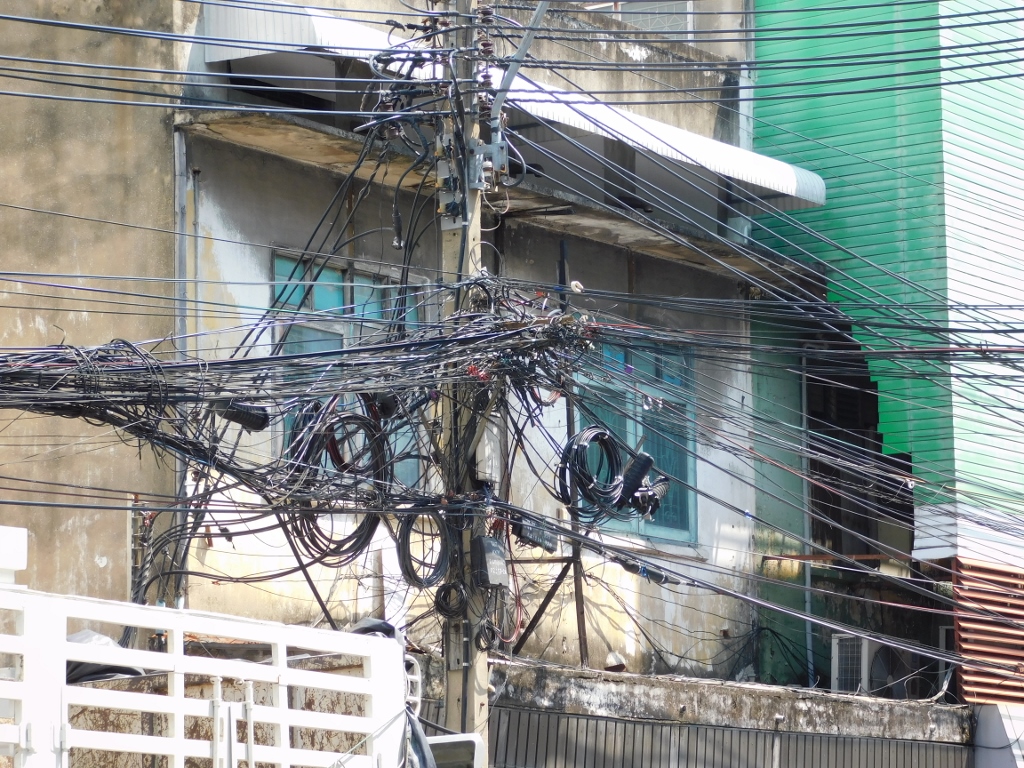 Bangkok, a detail
Bangkok, a detail
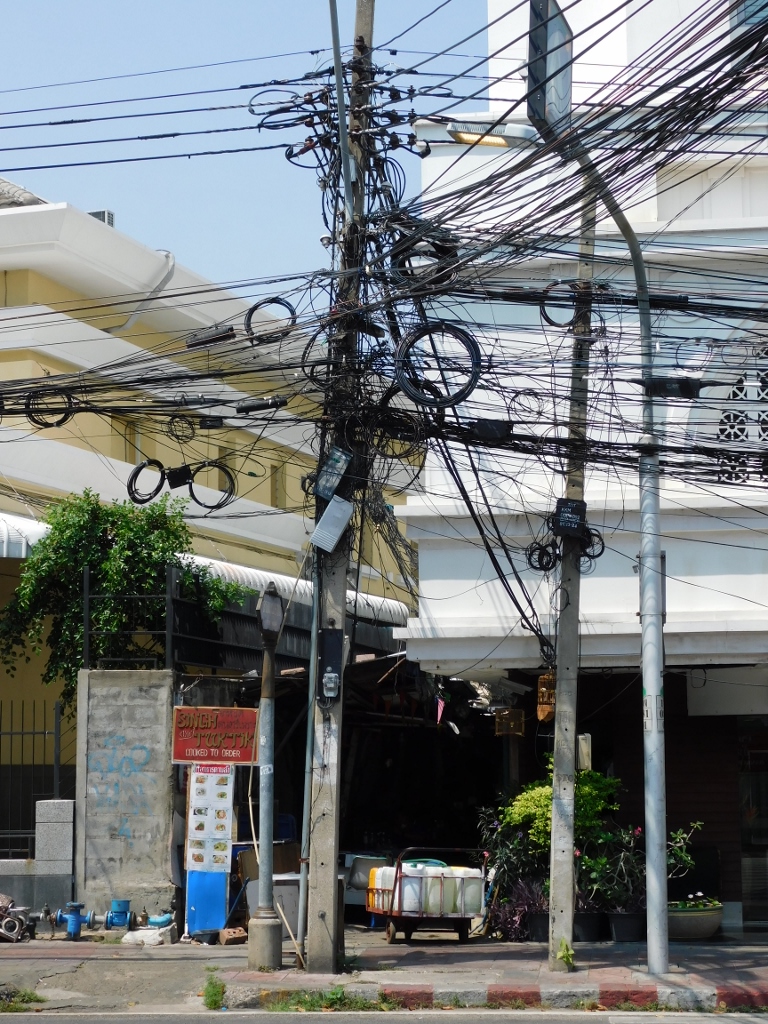 Bangkok, a detail
Bangkok, a detail
Although I love walking, on this occasion I got quite tired as I was still experiencing the fatigue from my journey and I needed some more time to adjust to the climate in Bangkok. As I would later realise at the end of the trip, Bangkok can get much hotter and much, much more humid, but the weather in mid-February was challenging as well. On the other hand, using the pedometer on my mobile phone, I realised that I walked 20 km this day! And this was just the beginning.
Nevertheless, it was good that my hotel was well-positioned, so I divided all that walking into several segments, after which I would return to the hotel to rest and cool down. This was also the case after this walk in the area north of the city centre.
After that break and since I had some free time due to the cancellation of the meeting with Rajna’s son Luke, I suddenly decided to go to the National Museum that was not far from my hotel. However, it was early afternoon, it was hot and the traffic was unbelievable. Since I was walking, the traffic congestion seemingly shouldn’t have affected me, but I had to cross some major Bangkok streets, the pedestrian red light lasted long and there was no shade. All of this contributed to my further fatigue, but at the end of the day, I could still be satisfied with myself and with what I had done.
First, along the way, crossing over a huge intersection, I accidentally passed by a very interesting place called Uthokkathan or Mother Earth Squeezing her Hair.
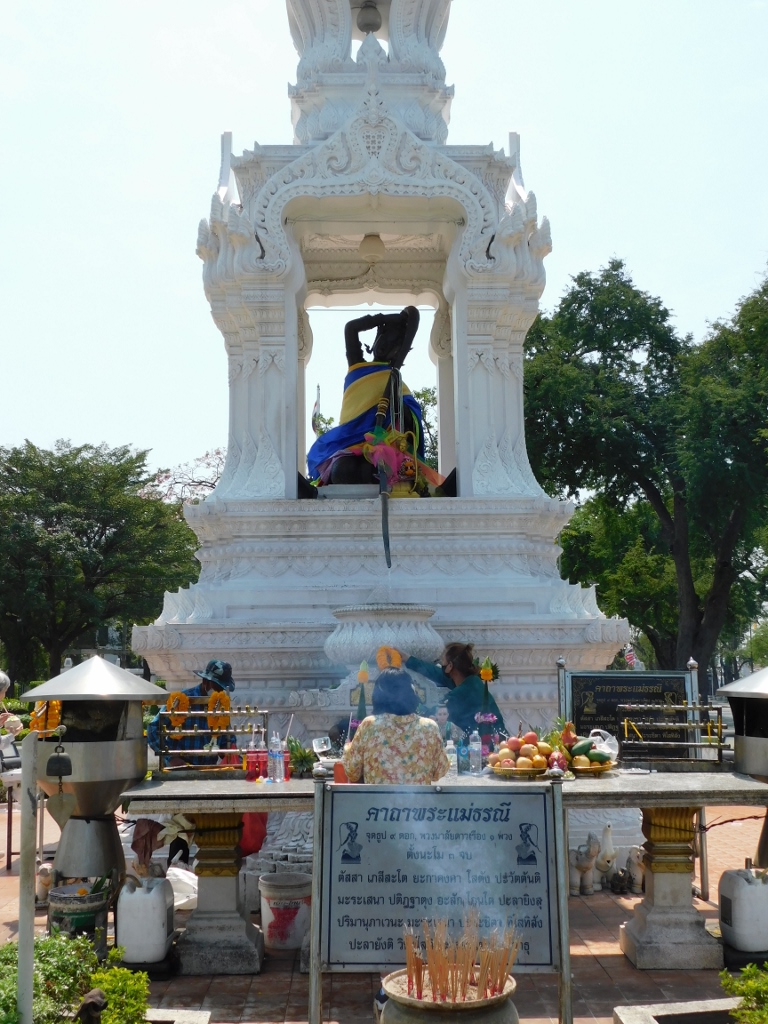 Uthokkathan or Mother Earth Squeezing her Hair
Uthokkathan or Mother Earth Squeezing her Hair
This monument was opened in 1917 and the credit for its construction goes to the wife of King Rama V and the mother of Kings Rama VI and Rama VII. Namely, when the waterworks system appeared in Bangkok, the then crown prince, later King Rama VI, suggested to his mother to build this statue where Mother Earth is squeezing her hair, while drinking water practically comes out from the tip of the statue’s hair.
The world “uthokkathan” actually means giving water as alms, which is a tradition in Thailand. People often leave vessels with water in front of their homes, intended as an offering to any passer-by. With this statue, the queen expressed the royal family’s compassion towards its people.
In the previous photo, you can see that water still flows from the top of the goddess’s hair and over time, this place has become a significant shrine, with the water considered holy.
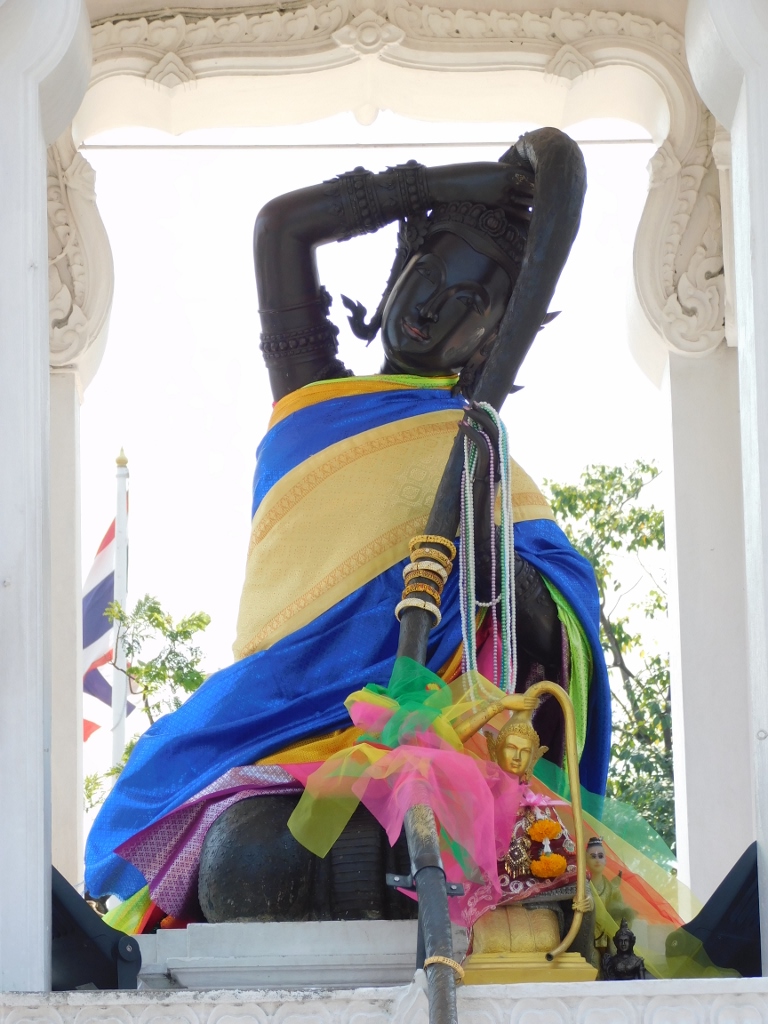 Mother Earth Squeezing her Hair
Mother Earth Squeezing her Hair
After taking photos of this monument, I finally reached the National Museum Bangkok.
The National Museum in Bangkok was founded by King Rama V in 1874, while the exhibition was moved to its current location in 1887. This area is also called Wang Na and it is known as the Palace of the Front because it served as the residence of Thai viceroys from 1782 to 1885. The museum is organised within some ten buildings. Some of them are unique spaces, while others are divided into different wings and special rooms. Even these buildings themselves represent exhibits in their own right.
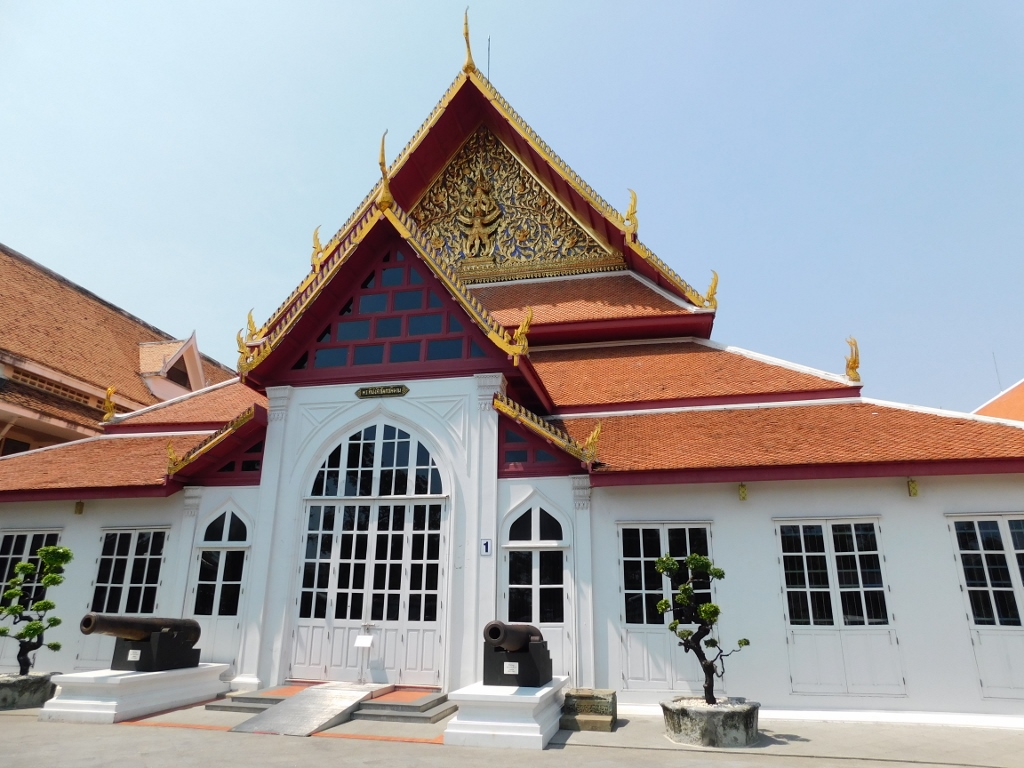 The National Museum Bangkok, a detail
The National Museum Bangkok, a detail
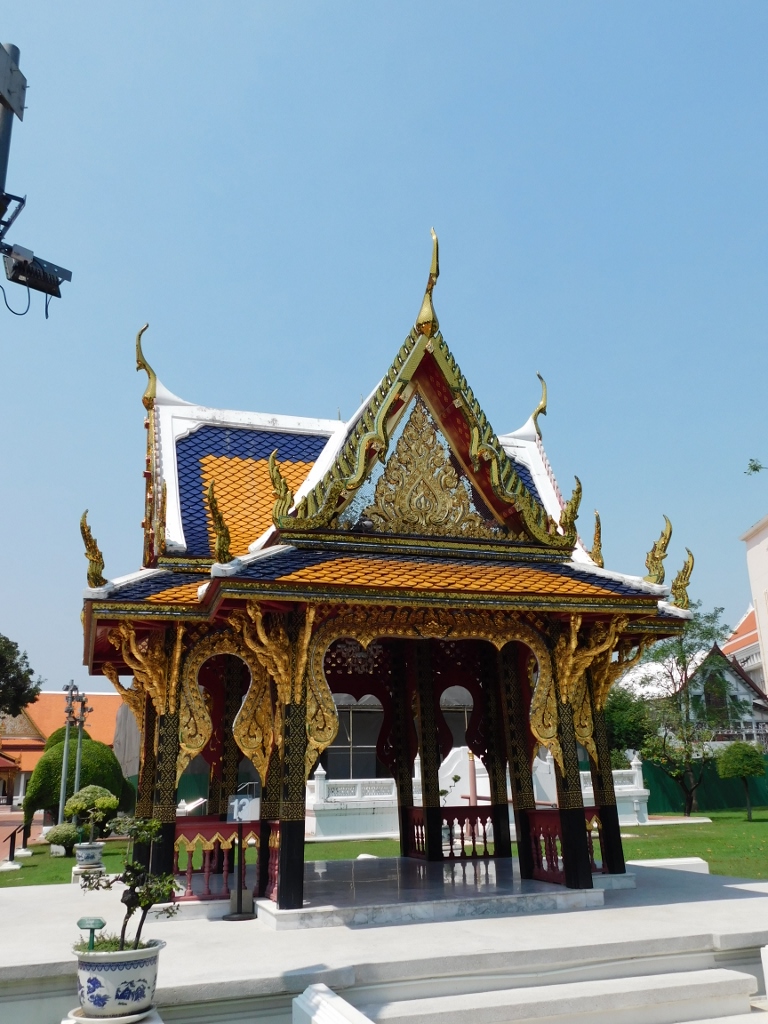 The National Museum Bangkok, a detail
The National Museum Bangkok, a detail
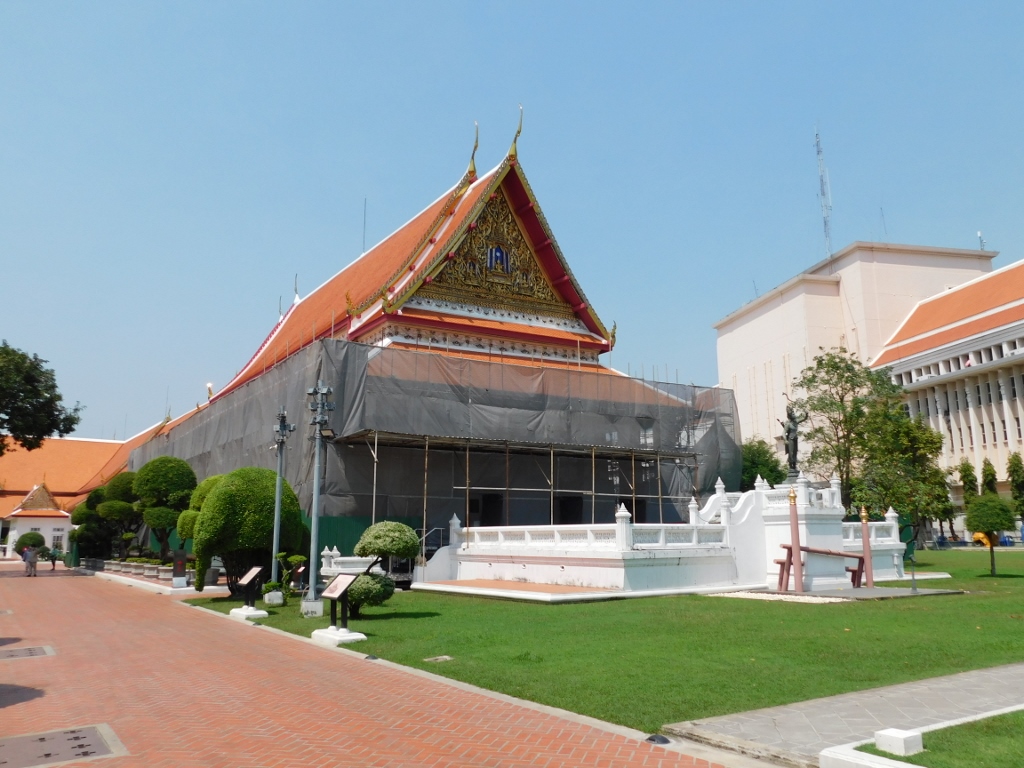 The National Museum Bangkok, a detail
The National Museum Bangkok, a detail
The structure seen in the previous photo is referred to by different names, but in the museum brochure, it’s called the Buddhisawan Chapel, so I’ll use that term. In any case, in front of the entrance to this magnificent structure, facade of which was undergoing renovation during my visit, stands a statue of god Vishnu holding a bow and arrow.
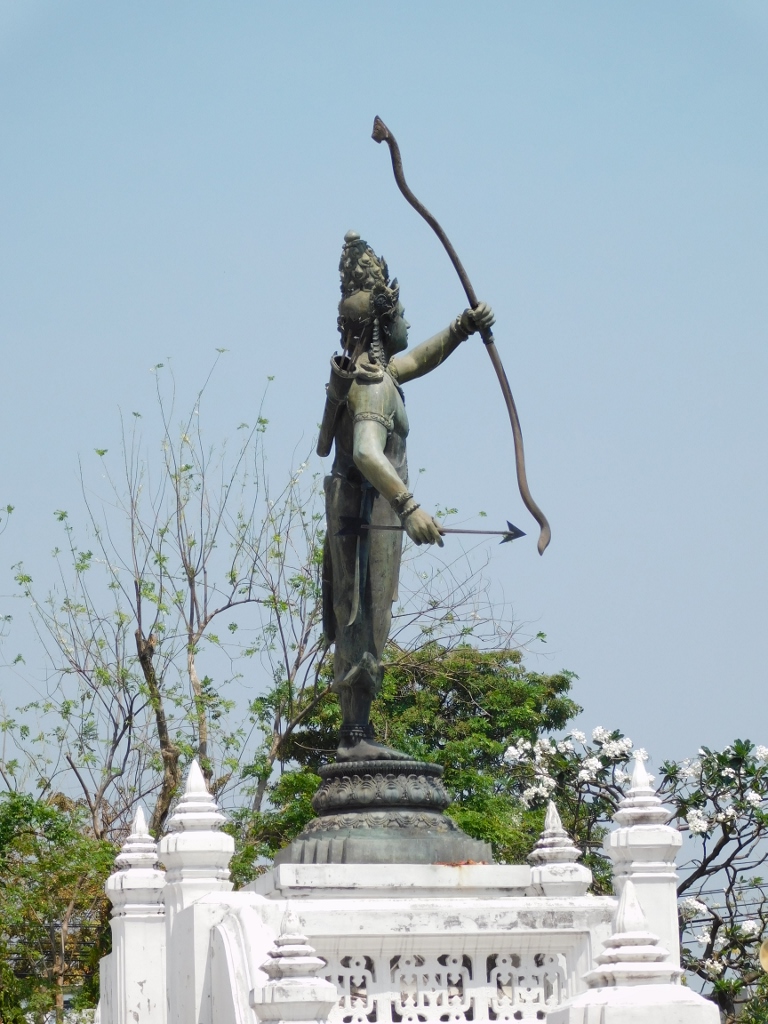 The National Museum Bangkok, a detail
The National Museum Bangkok, a detail
God Vishnu is a Hindu deity whose attributes include a bow and arrow, and one of his avatars is the legendary king Rama. However, in Asian religions, many concepts are fluid, including the depiction of a Hindu deity in a predominantly Buddhist country, which may seem unusual at first glance. In reality, Rama, along with the epic Ramayana narrating his life, appears in Buddhist texts and those of other religions in South and Southeast Asia. Moreover, Thai kings from the current Chakri dynasty are often called by the names like Rama I, II, III... and at the time of writing this text Rama X, further emphasising this connection to god Vishnu.
The sculpture was commissioned from an Italian sculptor by Rama V, but was completed during the reign of Rama VI. It was placed precisely where it stands today.
And when you enter the Buddhisawan Chapel...
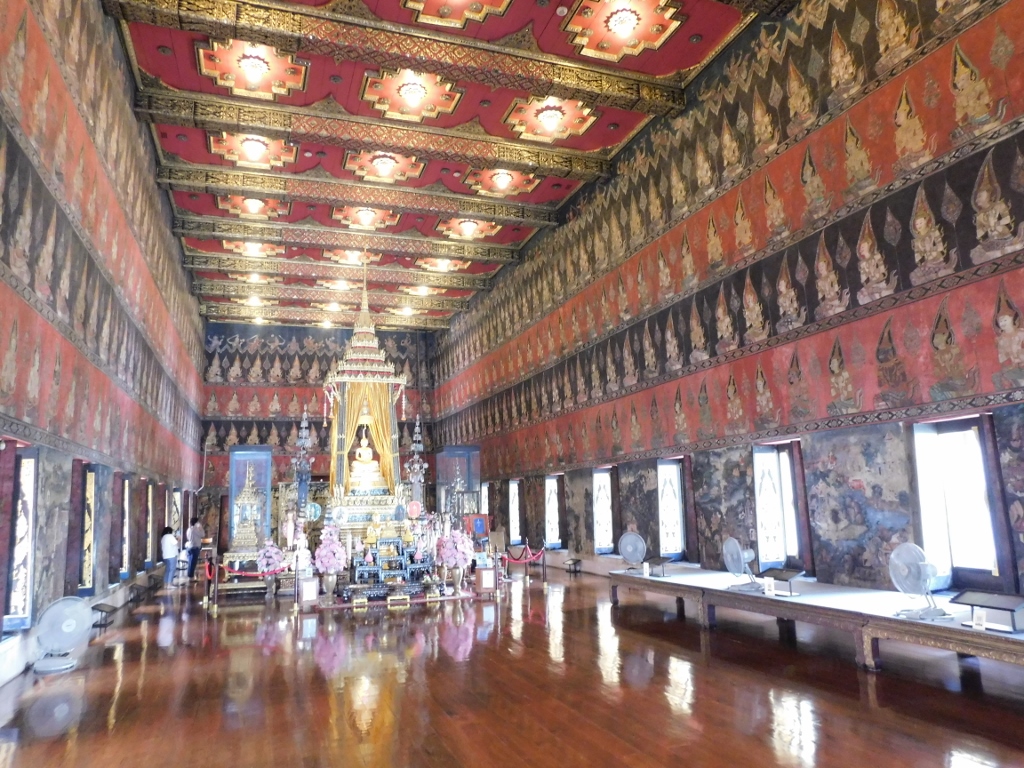 Buddhisawan Chapel
Buddhisawan Chapel
The central figure in the back of the chapel is Phra Phuttha Sihing, an impressive 15th-century bronze and gold sculpture of the Buddha. In 1795, the sculpture was brought from Chiang Mai, specifically from the renowned Wat Phra Singh temple. After the Emerald Buddha, it is considered the second most important representation of the Buddha in Bangkok.
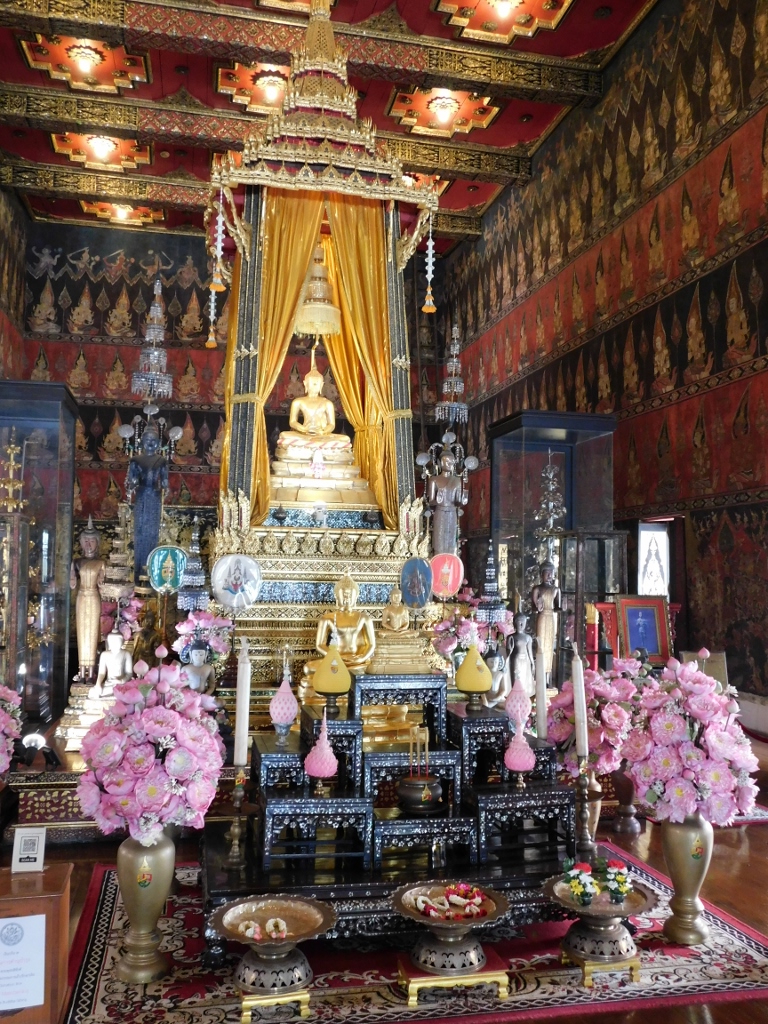 Buddhisawan Chapel
Buddhisawan Chapel
In addition to this significant Buddha figure, the Buddhisawan Chapel is renowned for its wall paintings, which are among the oldest in Bangkok.
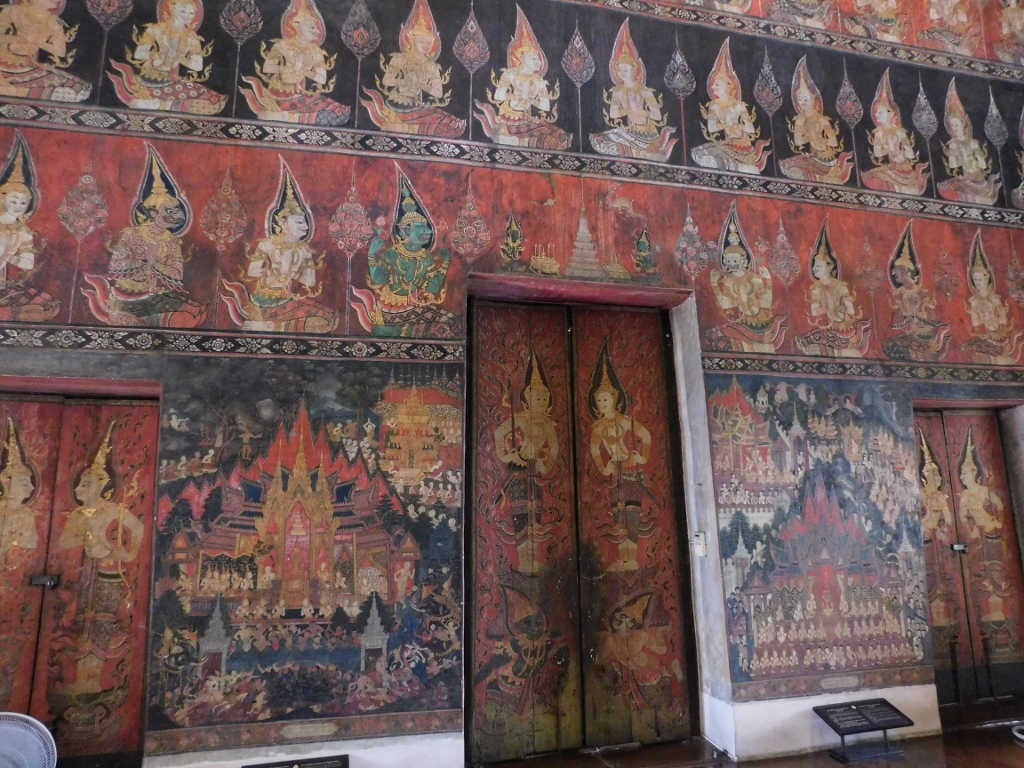 Buddhisawan Chapel
Buddhisawan Chapel
Following the visit to the Buddhisawan Chapel, I continued to explore the National Museum Bangkok.